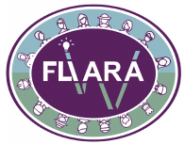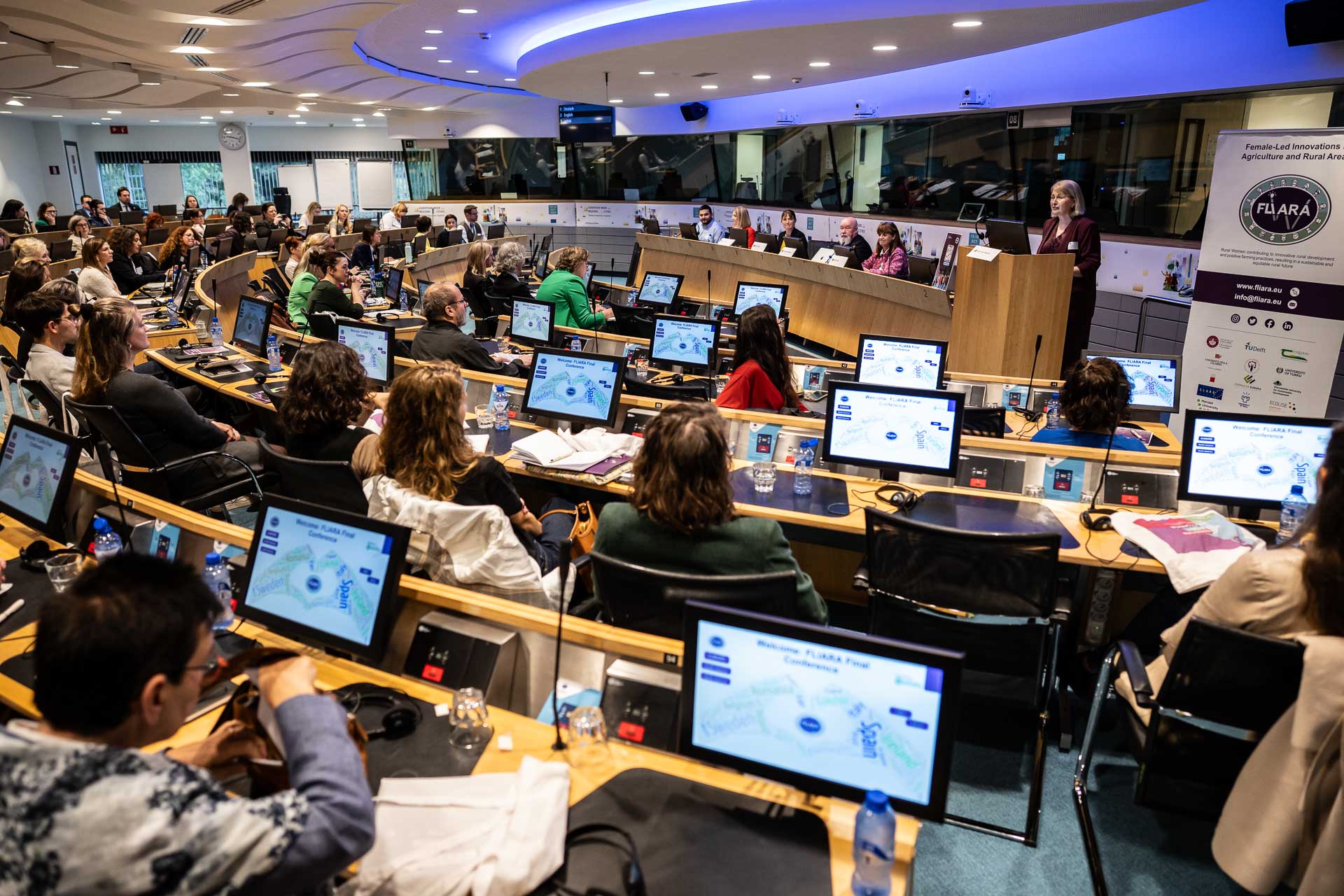The Final Conference of the FLIARA Project opened in Brussels at the European Committee of the Regions on October the 17th, gathering more than one hundred participants in-person and over two hundred via streaming from across Europe and beyond. Researchers, policymakers, ambassadors, civil society actors, and innovation practitioners came together with a shared purpose: to recognise and strengthen the role of women in shaping the future of rural areas and sustainable farming. Timed to coincide with the Rural Women’s Week, the event celebrated the culmination of three years of research, policy reflection, and community building carried out under the EU-funded FLIARA initiative.
Setting the Vision for Rural Women’s Futures
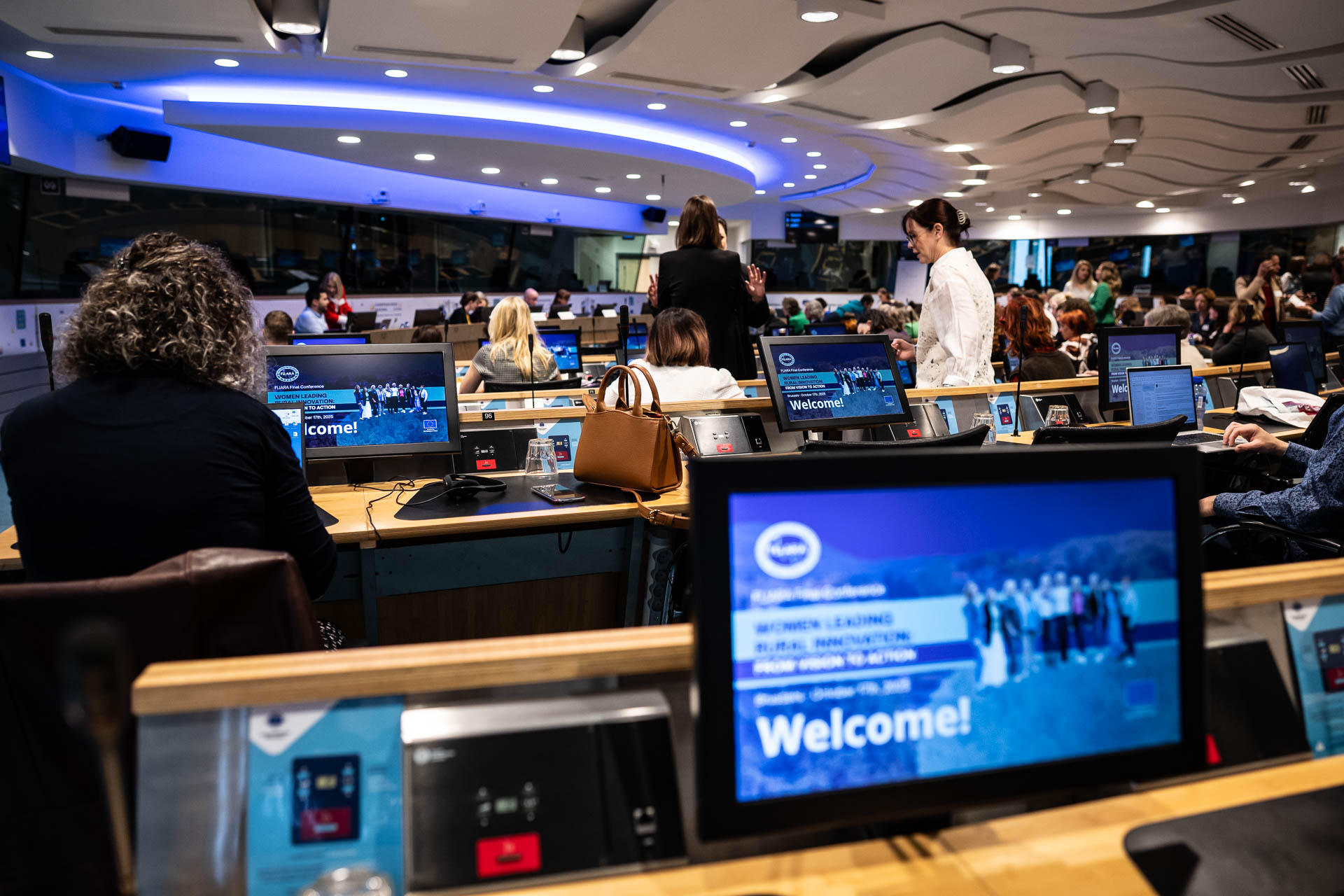
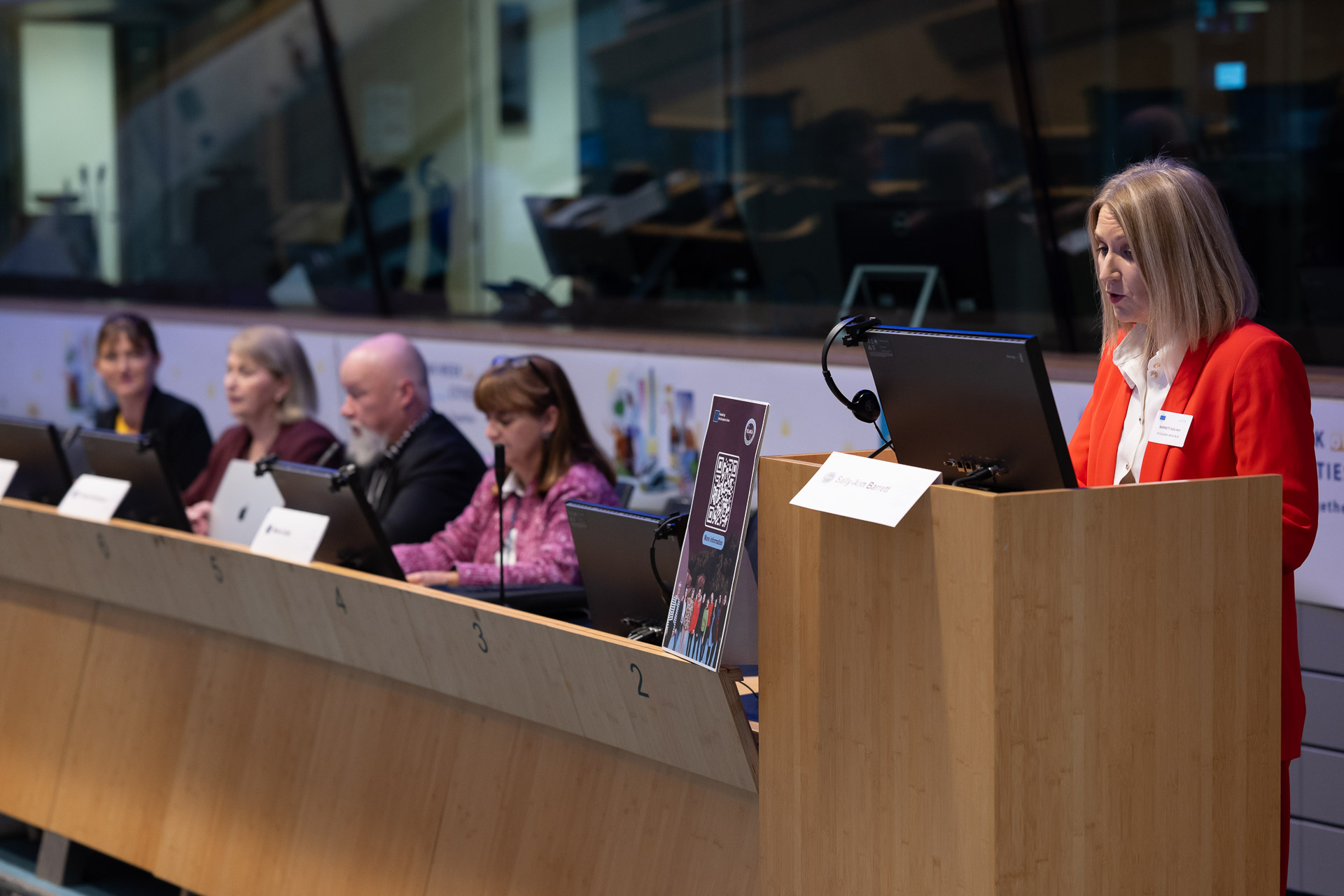
Conference Chair Sally-Ann Barrett from Freeway Media & Communications in Ireland opened the day by welcoming attendees onsite and online. She set an energetic and inclusive tone, inviting participants to engage actively through the Slido platform for questions and interactive exchanges. She reminded the audience that the conference was not only a celebration of achievements but also a moment of collective responsibility: to transform knowledge into action and to shape the next chapter for rural Europe.
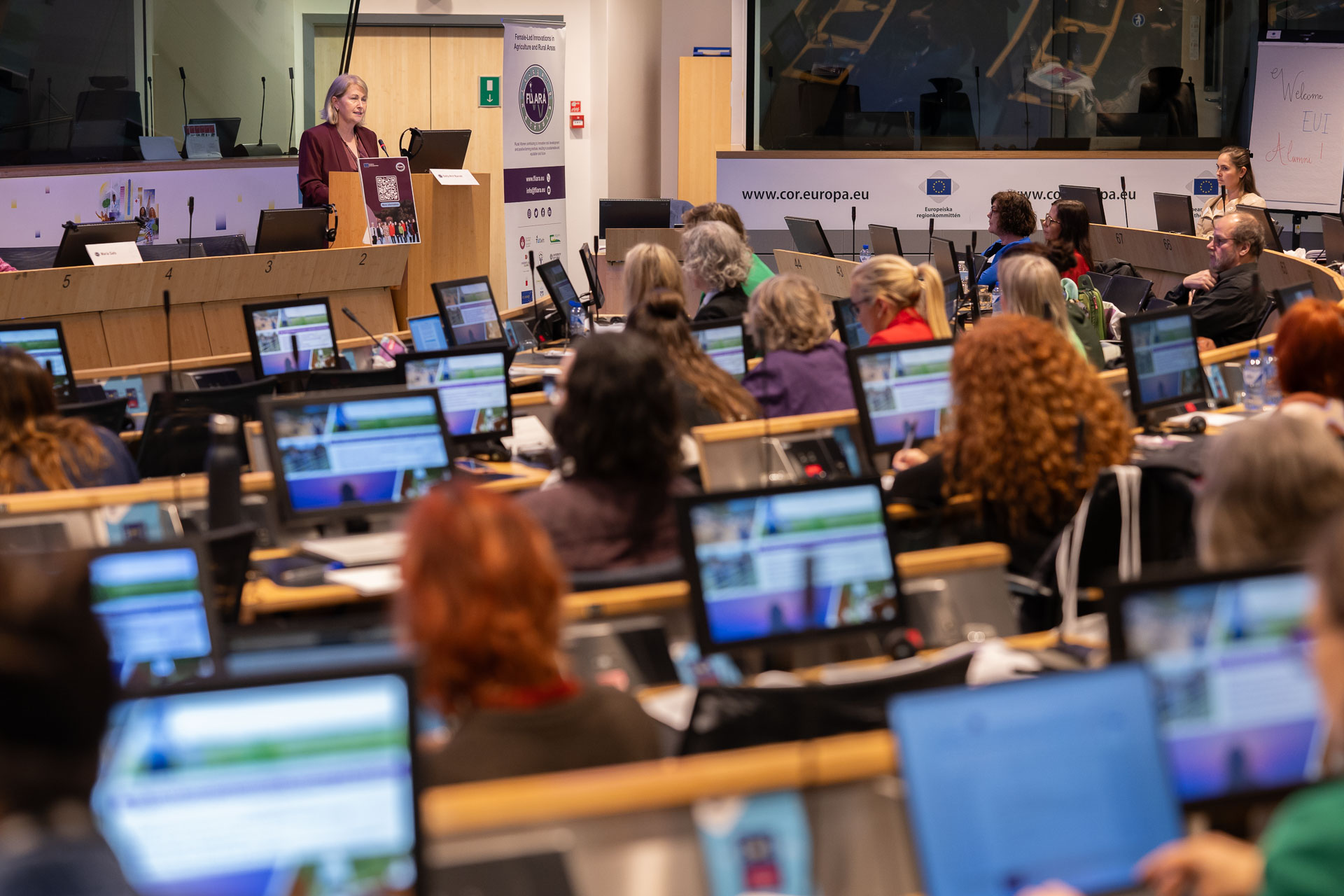
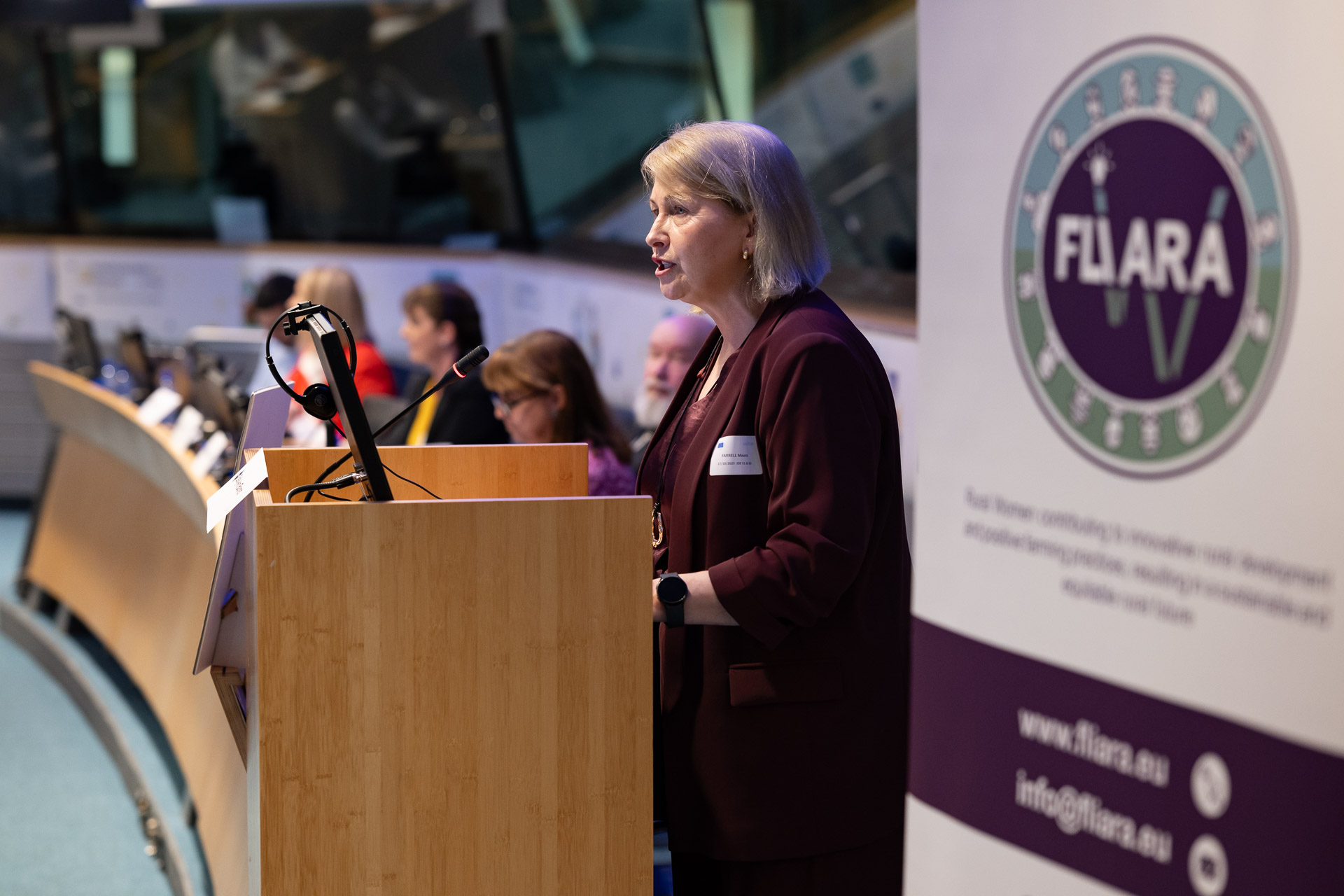
Taking the stage for the opening address, Associate Professor Dr Maura Farrell, FLIARA Project Coordinator from the University of Galway, reflected on the journey of the consortium and the inspiration behind it. She emphasised that innovation in rural areas cannot be fully realised unless women’s voices, skills, and leadership are recognised and supported. Dr Farrell highlighted FLIARA’s evidence base — including 20 case studies and 200 women innovators — and underlined that women’s contributions span all four pillars of sustainability: social, cultural, economic and environmental. She also paid tribute to the FLIARA Ambassadors, describing them as “the embodiment of innovation in action” and a driving force in raising visibility and mobilising communities across Europe.
The keynote address was delivered by María Gafo Gómez-Zamalloa, Acting Head of Unit for Social Sustainability at the Directorate-General for Agriculture and Rural Development (DG AGRI) of the European Commission. She placed the FLIARA results within the broader EU policy landscape, recalling that gender equality is a founding principle of the European Union and a growing priority within the Common Agricultural Policy. She stressed that although women remain under-represented in farming leadership—with fewer than 32% of EU farm managers being women, and only around 2% under the age of 40—EU initiatives and upcoming strategies are seeking to address these gaps. She affirmed that women’s innovation has the power to transform not only agri-food systems but entire rural communities and reiterated the need for structural support, better data, and gender-responsive policies.
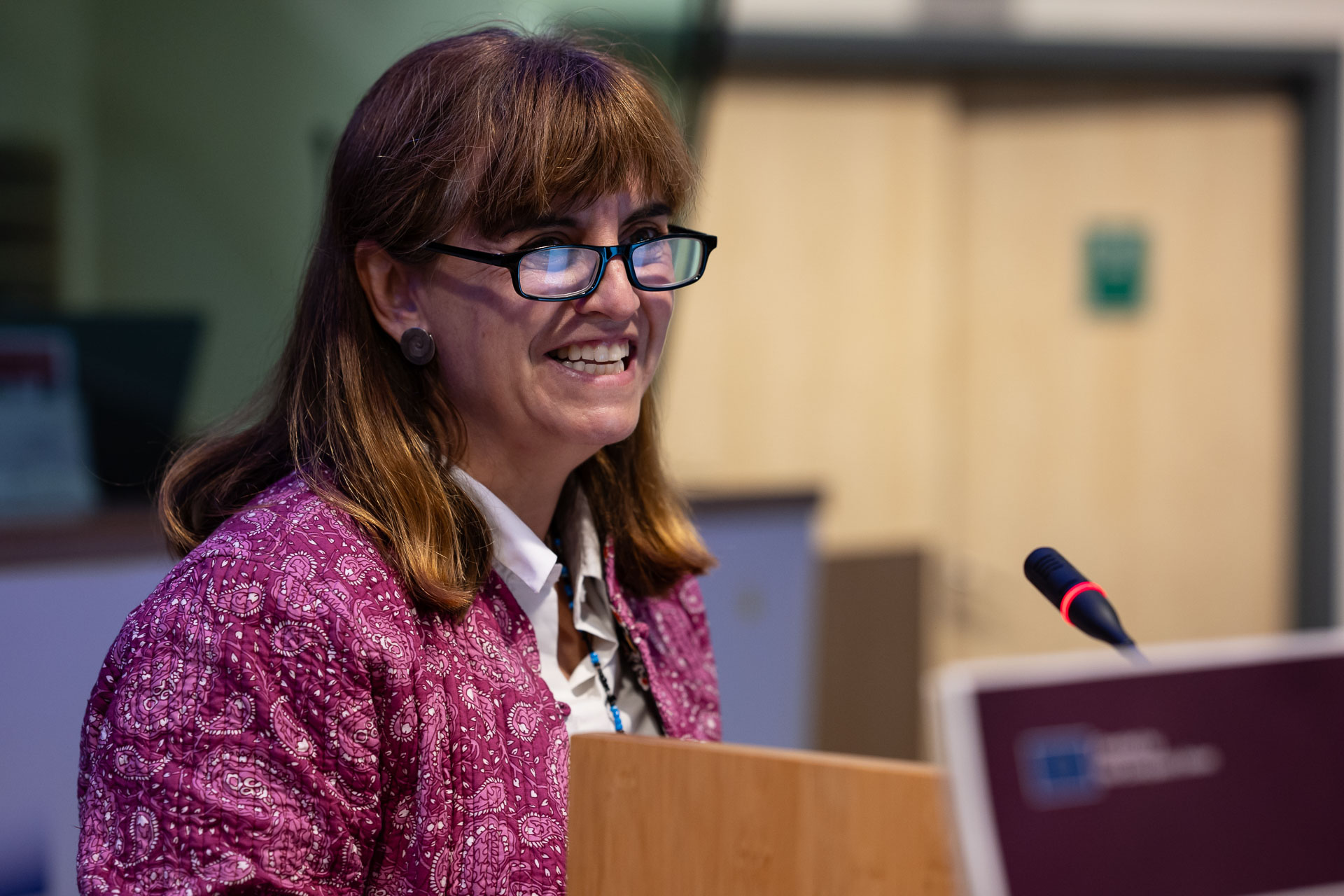
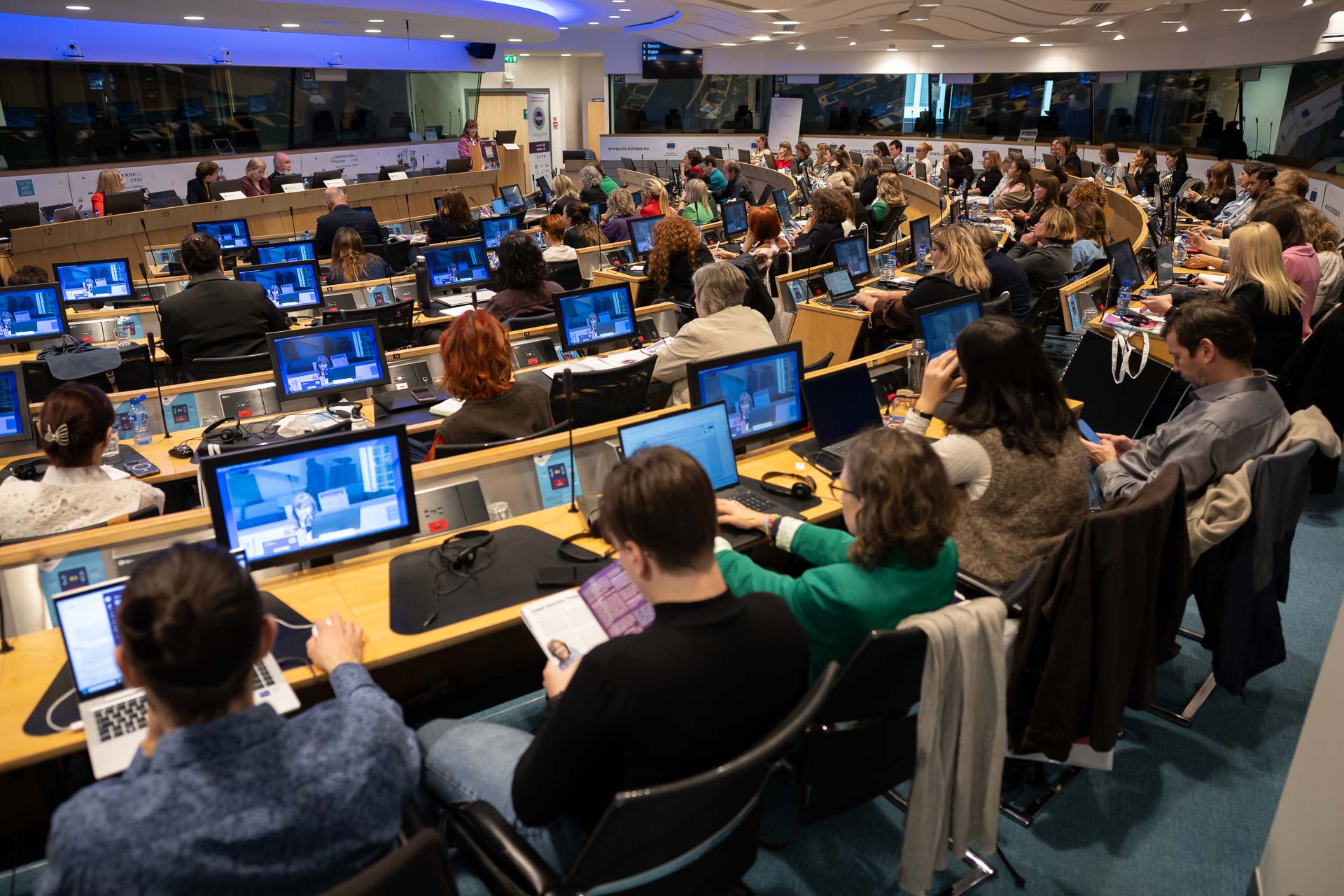
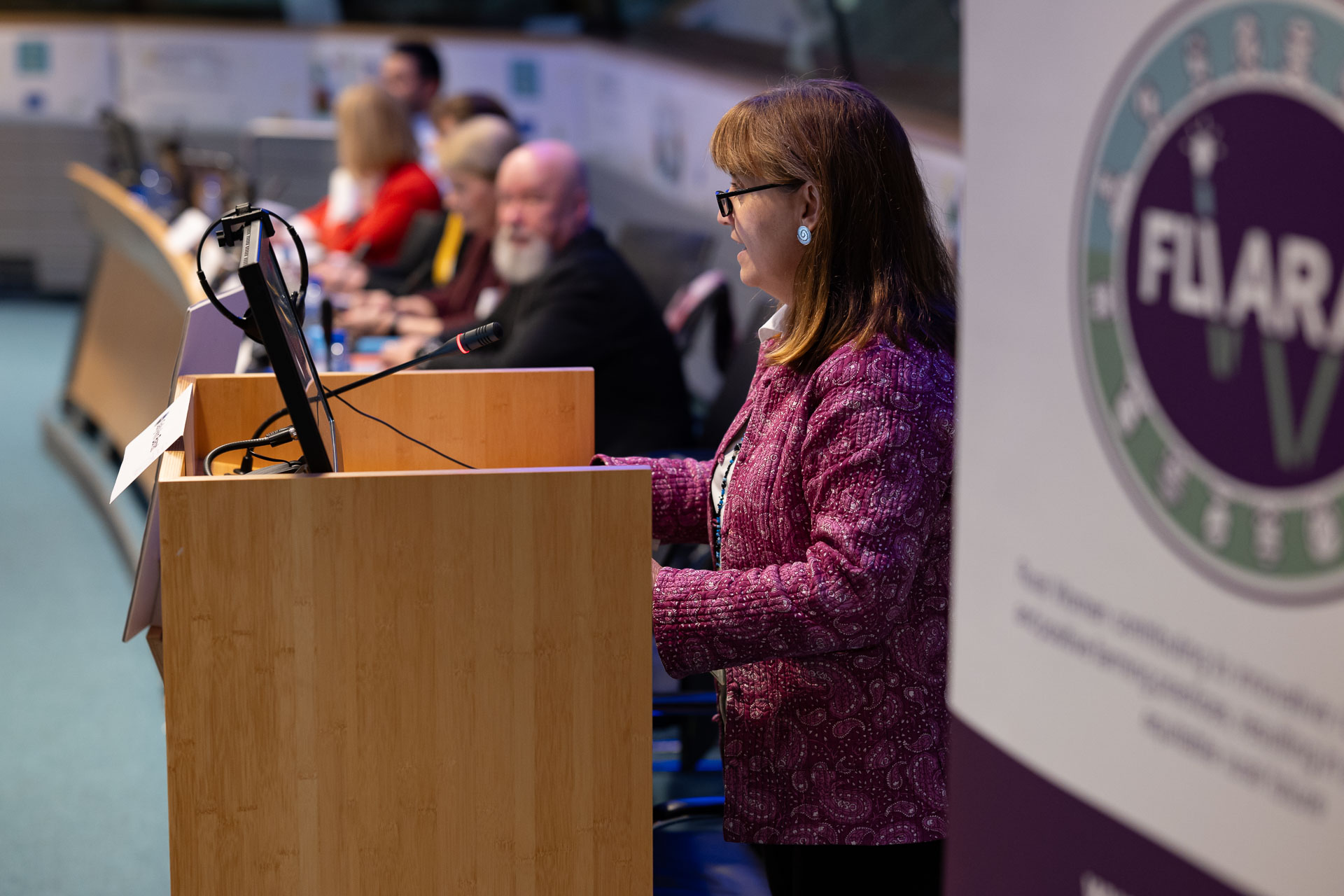
The opening session concluded with the first interactive input from the audience via Slido, inviting participants to answer in one word: “What change do rural women bring to innovation?” Words such as ‘resilience’, ‘sustainability’, ‘creativity’, and ‘leadership’ filled the screen, capturing the spirit and expectations of the day ahead. With this shared enthusiasm, the FLIARA Final Conference moved into its first thematic session, transitioning from vision to evidence and from reflections to concrete results.
Understanding Women-Led Innovation in Rural Areas
The first session of the conference shifted from vision to evidence, presenting the foundations of FLIARA’s research and the systemic realities shaping women’s innovation journeys across Europe. Building on the momentum of the opening session, this segment equipped the audience with a clearer understanding of why change is needed and where policy and practice must evolve.
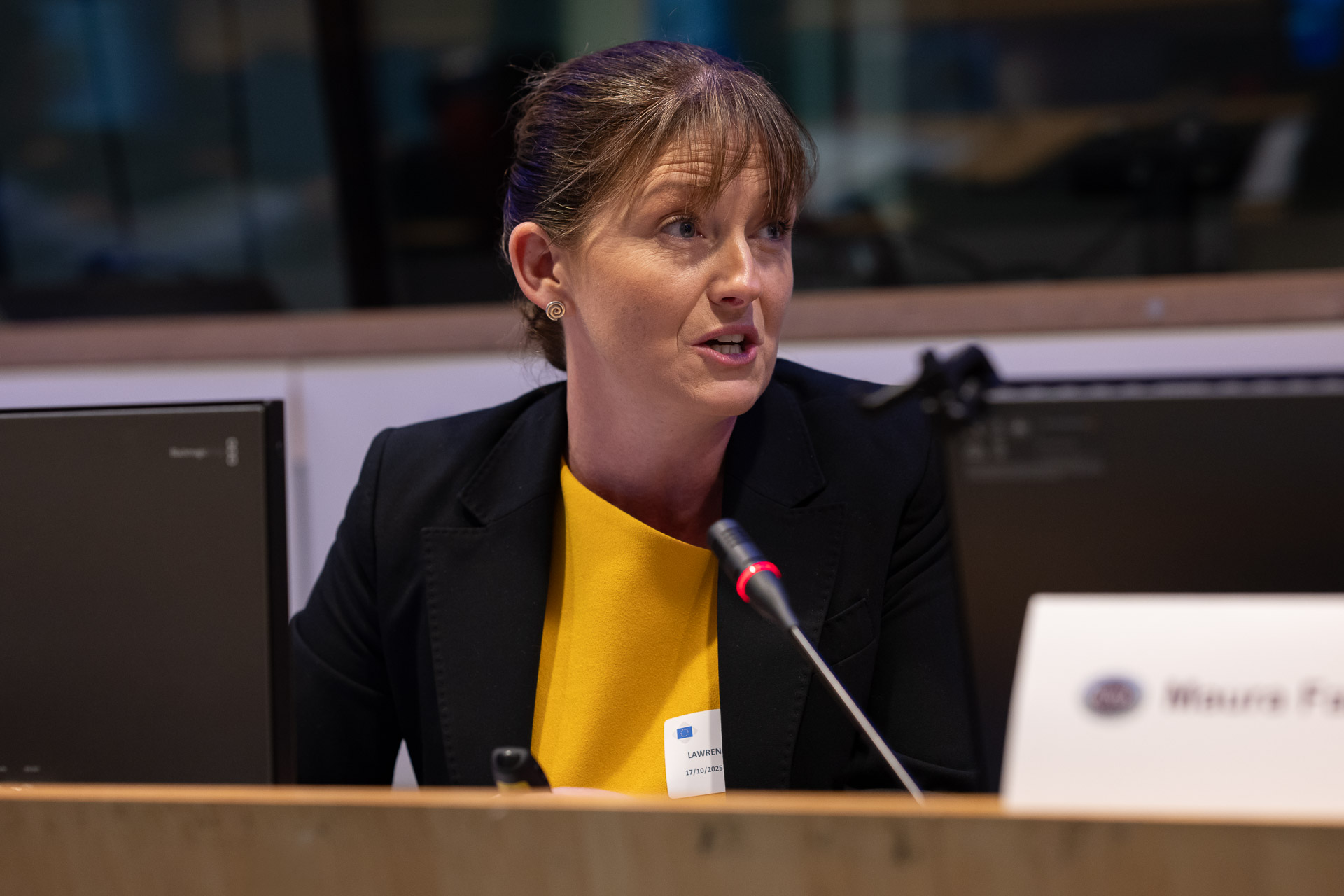
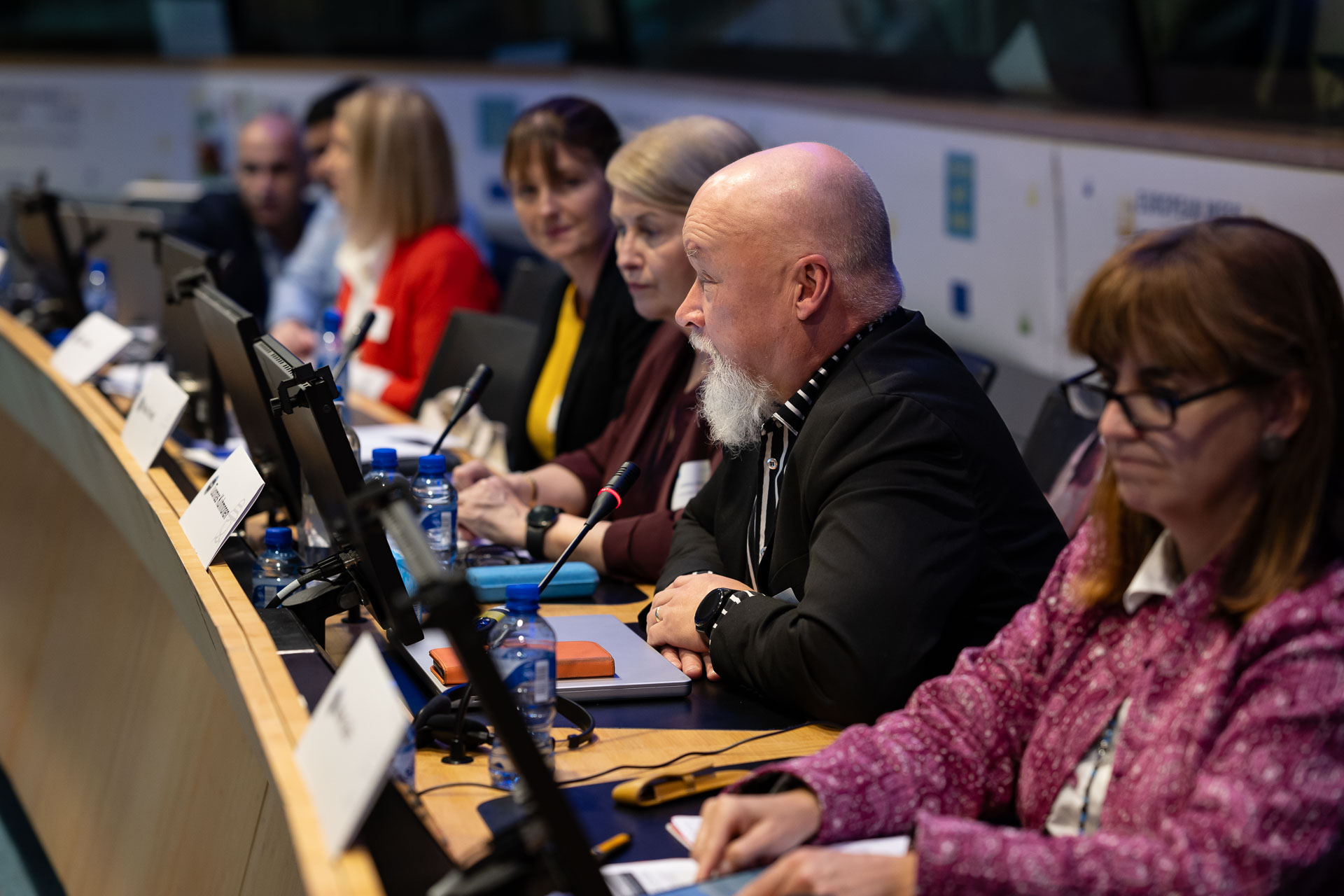
Louise Weir, FLIARA Principal Project Manager at the University of Galway, opened the session by unveiling FLIARA’s conceptual and analytical framework, which serves as the backbone for the project’s policy recommendations. She emphasised that women in rural areas are not a homogenous group and that innovation pathways are deeply influenced by place, culture, norms and access to opportunity. Through an extensive review of legislation, knowledge systems and policy environments across ten EU countries (Ireland, the Netherlands, Germany, Sweden, Slovenia, Czech Republic, Romania, Italy, Spain, and Finland), the project identified persistent barriers—from patriarchal norms to fragmented support services—that continue to hinder women-led innovation. Weir stressed the importance of building “flexible, evidence-based tools that address root causes, not symptoms”, highlighting benchmarking, gender-aware policy design and ecosystem thinking as essential elements for long-term transformation.
Next, Professor Tuomas Kuhmonen, Research Director at the Finland Futures Research Centre in the University of Turku in Finland, expanded the lens toward the future, presenting the project’s foresight study and an impressive body of stakeholder evidence. With over 560 participants and 300 proposed measures, the research revealed that women have strong potential to drive environmental and social innovation, yet face disproportionate obstacles in economic, technological and political spheres. Kuhmonen underscored that the most effective levers for change are social measures—particularly networks, platforms for co-creation, visibility, and peer support—noting that “there is no single silver bullet; networks are needed everywhere.” His findings reinforced the dual message of the session: women are already key innovators, and systemic change must match their ambition.
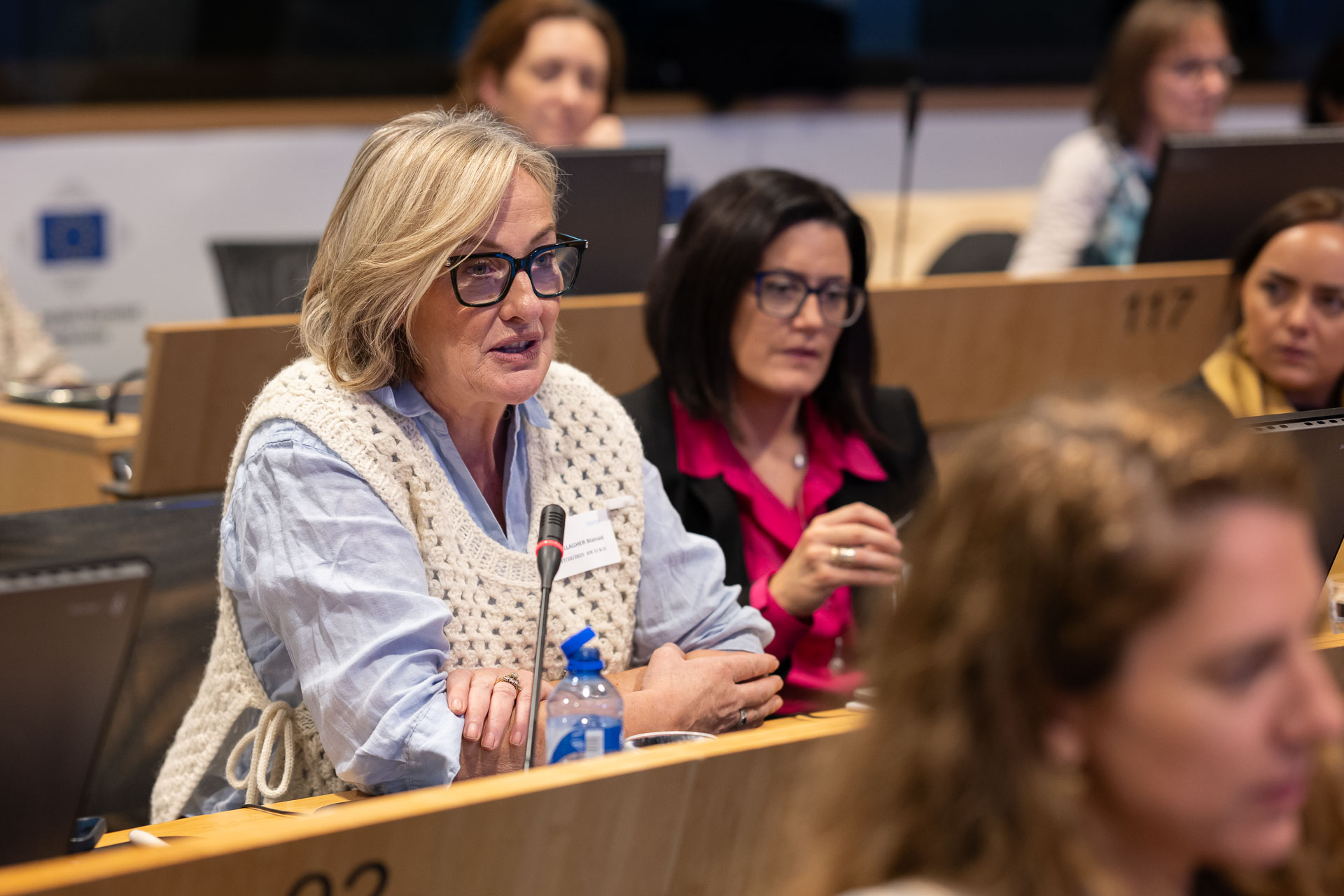
To ground the research in lived experience, FLIARA Ambassador Blátnaid Gallagher delivered an energising reflection that resonated strongly in the room. Drawing on her journey as a farmer, cooperative founder and community leader, she painted a vivid picture of both the challenges and the untapped potential of rural women. Gallagher called for “one central portal” to simplify access to information and funding for female entrepreneurs, urged policymakers to break the “silos” that isolate rural innovators, and highlighted the need to build stronger rural–urban bridges to scale enterprises beyond the local level. She reaffirmed the transformative power of visibility — “if you can see it, you can be it” — and highlighted how engaging in FLIARA activities and the Community of Practice has helped women feel connected, supported and seen. Her intervention earned heartfelt applause and anchored the session in the human reality behind the data: determined, resilient and future-focused rural women who need systems that work with them.
With a shared understanding of the challenges and opportunities now clearly laid out, the conference transitioned to the heart of the FLIARA story: the women driving change on the ground and the policy frameworks needed to support them. Session 2 would turn these insights into concrete pathways for action.
Pathways, Challenges and Leadership in Women-Led Rural Innovation
The second session shifted the focus from vision to evidence. After hearing the policy landscape, the room turned its attention to the findings emerging from the heart of the FLIARA project: the lived realities of women innovators across Europe. Associate Professor Silvia Sivini, Associate Professor of Sociology at the University of Calabria in Italy, took the floor to present the results of 20 national case studies, 200 women, and a research journey spanning 10 countries, four sustainability dimensions, and diverse rural typologies. Her presentation set the tone for one of the conference’s most human-centred and inspiring moments.
Research Findings: Evidence of Impact and Barriers Still to Break
Sivini explained that FLIARA set out to understand how women innovate, what enables them, what slows them down, and what systems must change. The research explored three interconnected layers: innovation pathways, innovation ecosystems, and mainstreaming potential. Across regions—from the Mediterranean to the Baltic—stories varied, but the patterns were strikingly consistent.
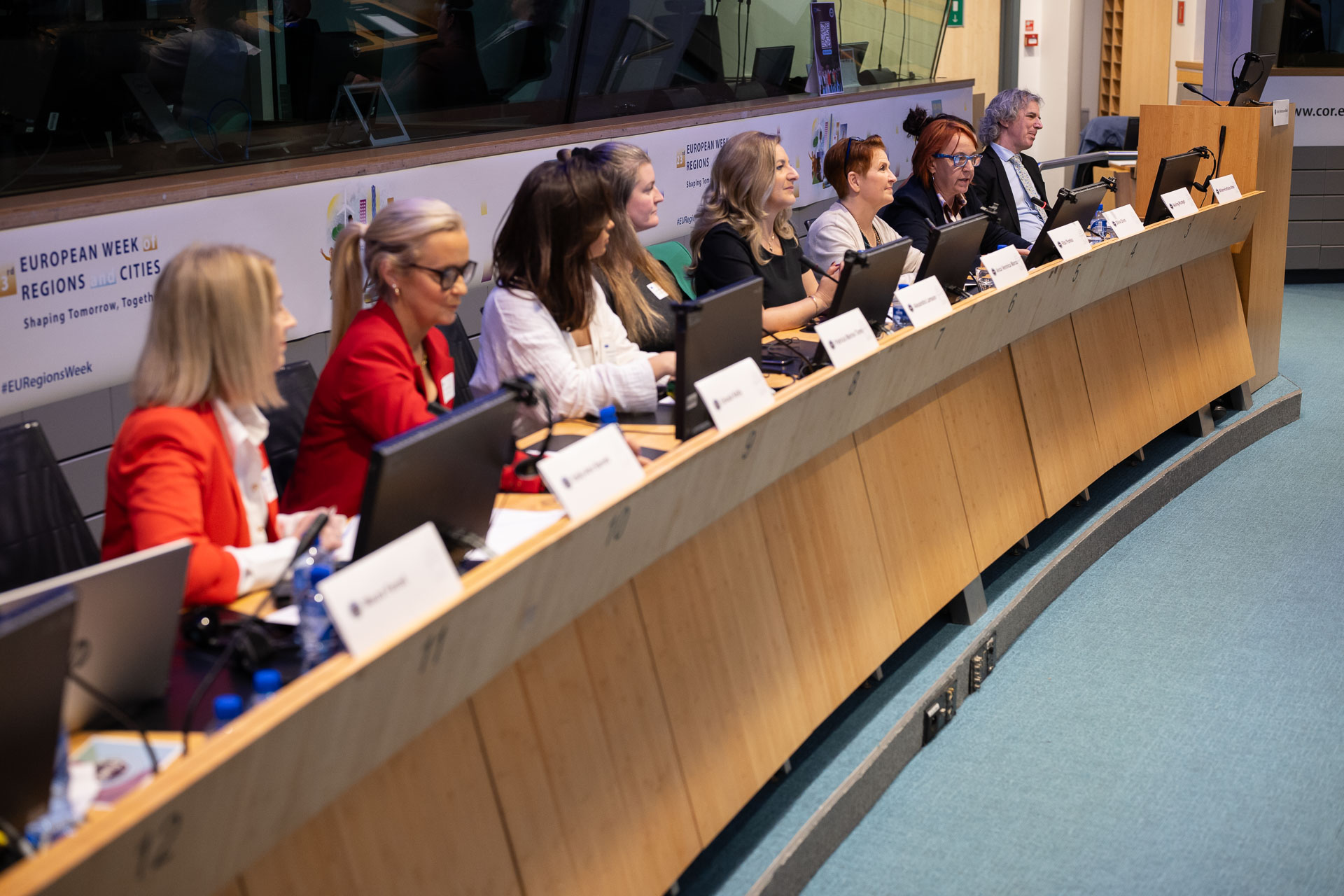
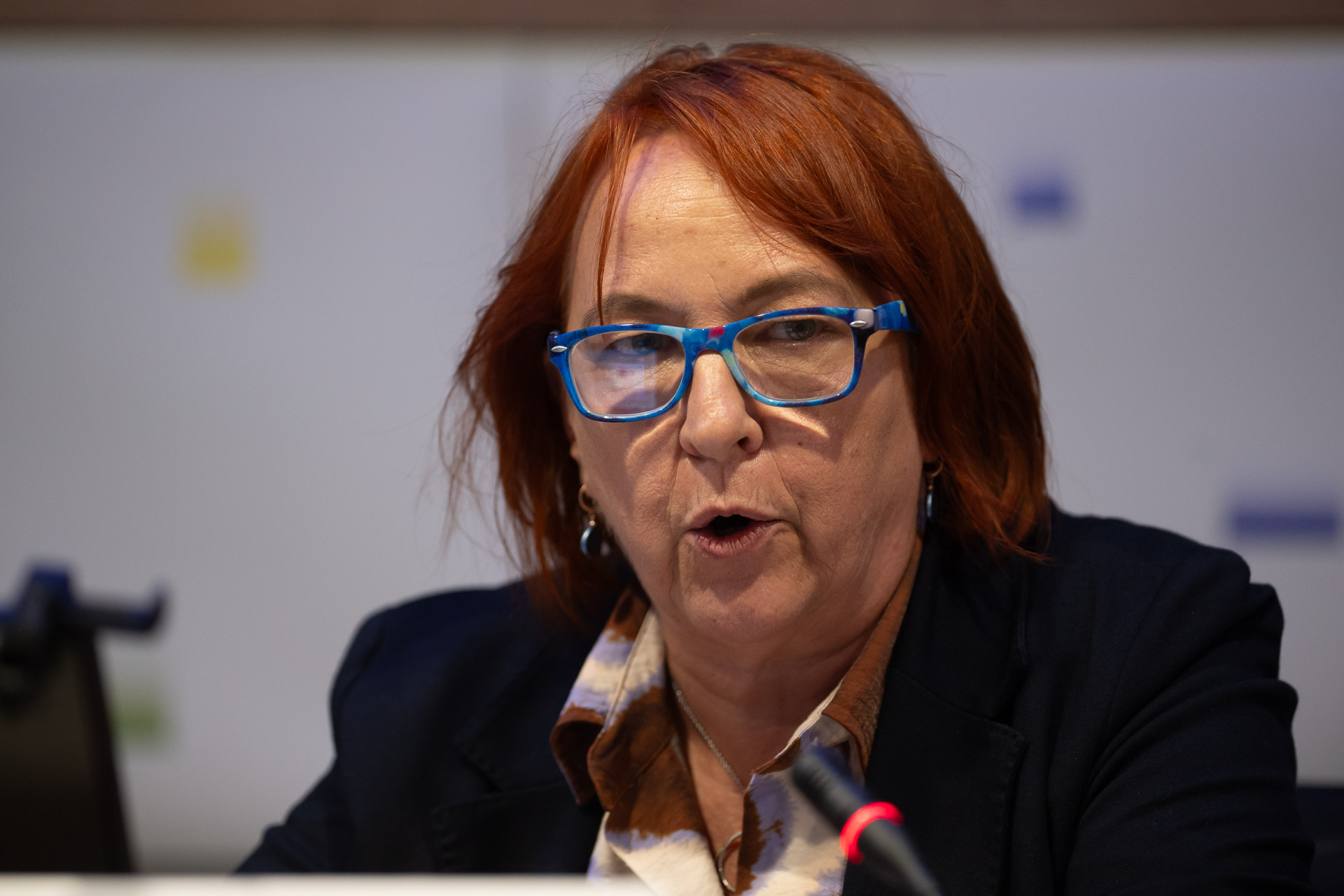
Women were found to be drivers of sustainability, not only in environmental leadership (with 97% of interviewees integrating ecological principles into their innovation) but also in creating social value, reviving cultural heritage, and strengthening local economies. They built multifunctional farms, circular-economy initiatives, social enterprises, educational programmes, and place-based tourism experiences, often using digital tools to overcome geographic isolation.
Yet, Sivini noted, the barriers were equally systemic: limited access to finance and land, persistent gender stereotypes, bureaucratic complexity, lack of tailored training, and insufficient policy coordination. Many women reported experiencing imposter syndrome at the beginning of their journey. Others were considered “crazy” for proposing new ideas in male-led environments but succeeded through resilience, networks, and community trust.
Her conclusion was clear: women are innovating against the current, not with it—and policy must catch up.
Following the research presentation, Sarah Khoudja, FLIARA Ambassador for Italy and entrepreneur, delivered a sharp and memorable reflection. Her message was simple: “Innovation doesn’t wait for committees. We must break the bureaucratic chain. Women with an idea should be able to act quickly — without procedures that drain time, energy and hope.”
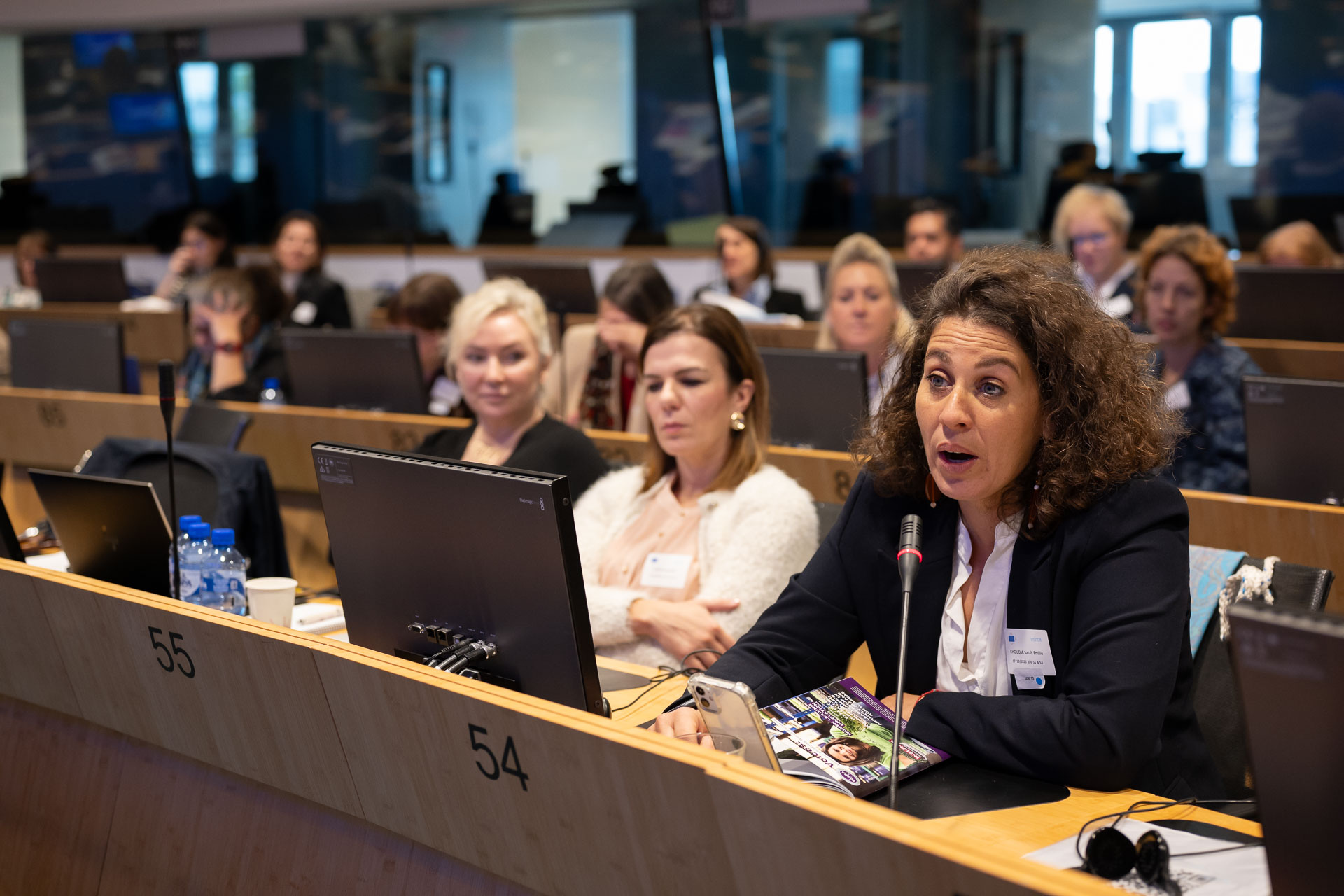
She urged European, national and regional institutions to simplify access to funding, arguing that many female innovators have the vision but not the administrative armour that current systems demand. Her words set the stage for the session’s core moment: the Ambassador Roundtable.
Voices from the Ground: The Ambassadors’ Roundtable
If the morning presentations offered evidence, structure and data, the Ambassadors’ Roundtable brought life, emotion and urgency into the room. The atmosphere shifted the moment the five FLIARA Ambassadors took the floor—women who are not only innovators but also voices of their territories. In Brussels, their reflections became one of the most applauded and moving moments of the entire conference.
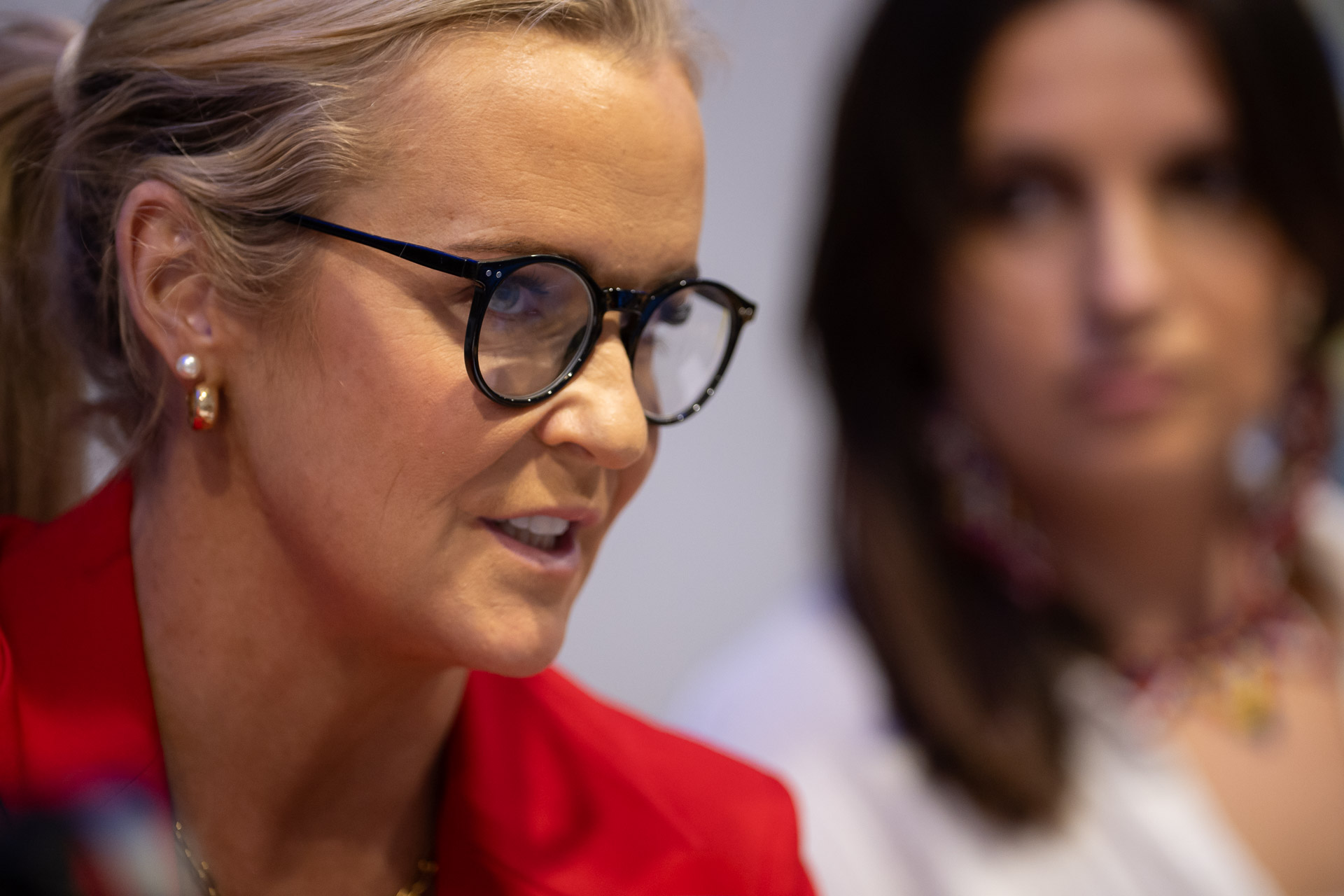
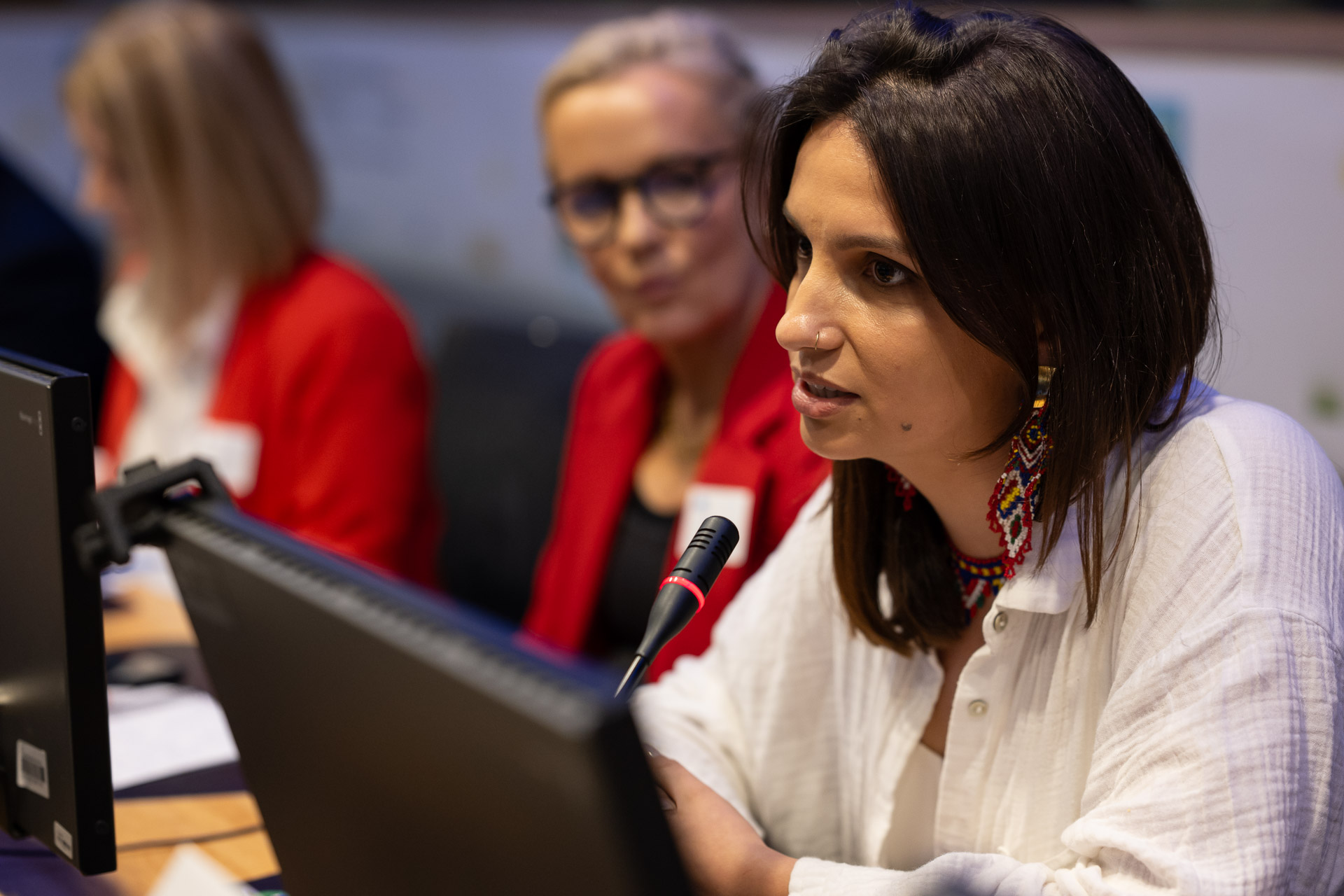
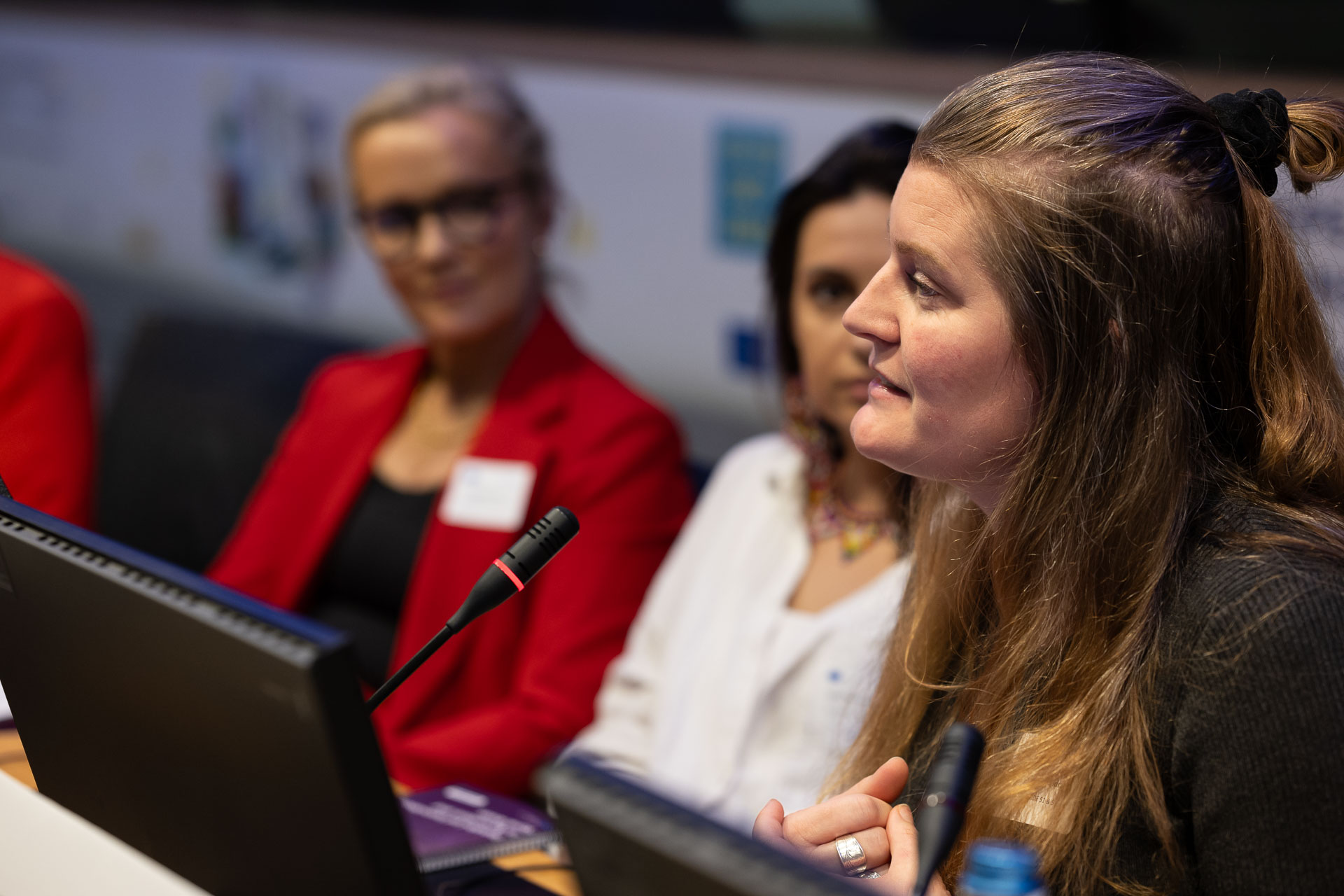
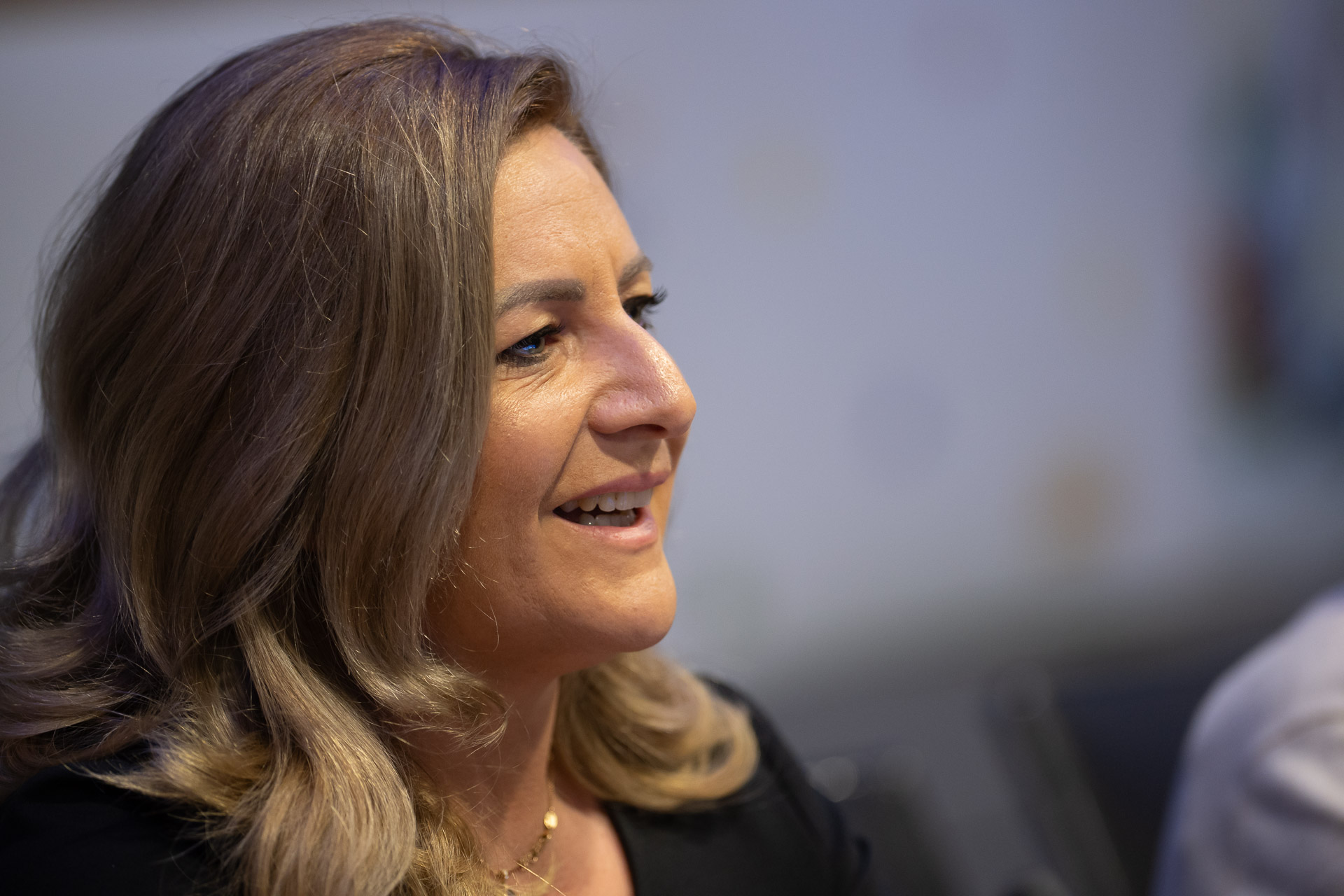
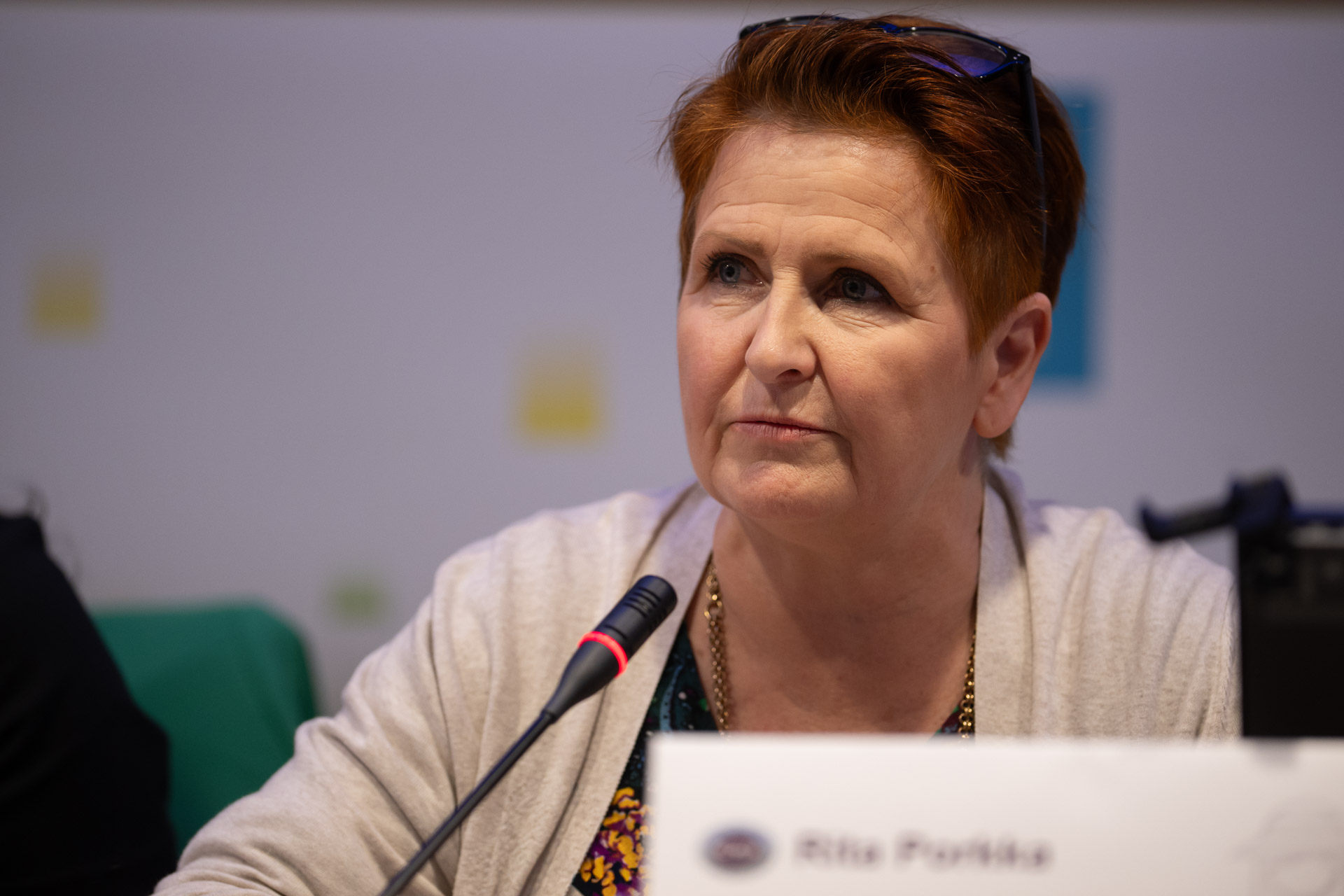
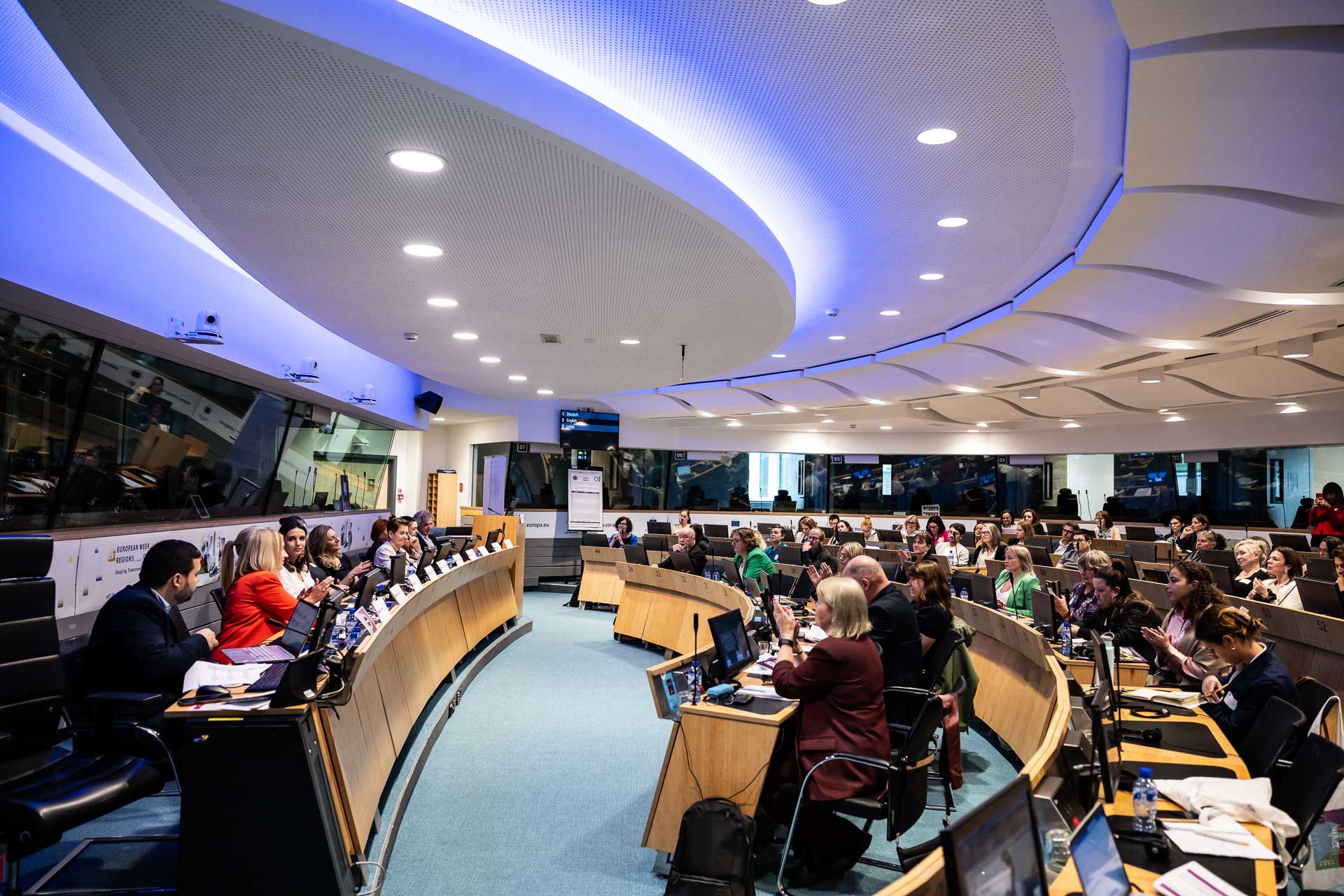
The panel opened with a simple premise: what does it really take for a woman to innovate in rural Europe? What followed was not a technical debate but a shared human journey across Sweden, Finland, Ireland, Romania and beyond.
Alexandra Larsson from Sweden: “We need to stop designing systems for big companies and expecting small rural women to survive in them.”
Alexandra, a driving school owner who has just become the first woman in her region licensed to train motorbike drivers, spoke candidly about the burden rural entrepreneurs face once they hire their first employee. Her voice was steady, but her message was sharp: “The moment you employ someone, responsibility explodes—but the support does not. We need systems designed for us, not for corporations with HR departments.” Her intervention highlighted what many nodded to: innovation is not only vision—it is paperwork, time, bureaucracy, accounting and sacrifice, and women are carrying that load on top of childcare, community pressure and unpaid care work.
Rita Porkka from Finland: “Transparency is the first form of fairness.”
From northern Europe, Rita brought a different but equally revealing perspective. She runs a nature-based education initiative and spoke about the hidden walls rural women face—not only financial but also cultural: “Even today, decisions about funding and development can happen in closed circles. Transparency and clarity should be rights, not privileges.” Her calm delivery carried a powerful idea: if rules were clear, accessible and transparent, half of the barriers would disappear before women even asked for support.
Anca Veronica Marcu from Romania: “Listen to women first. They already know what their community needs.”
A former teacher and now mayor, Anca shared her experience as one of the very few women in political leadership in rural Romania. Instead of focusing on confrontation, she chose a message of dignity and constructive change: “Women don’t need more obstacles or more complexity. They need institutions that listen, simplify and accompany. When women have tools, communities move forward.” Her words, soft but resolute, earned a warm round of applause. She reminded the room that policy is not abstract—policy is felt in kitchens, in schools, in farms, and in daily life.
Ursula Kelly from Ireland: “Networks are not a luxury. They are oxygen.”
Ursula, as a rural entrepreneur and vocal advocate for women in farming, delivered one of the strongest messages of the session. For her, the conclusion is clear: “Women innovate when they feel supported. Networks create confidence. Confidence unlocks innovation. If policymakers want results, fund the networks.” She called for continued European investment in rural development and women-led initiatives, insisting that projects like FLIARA must have a “day after”, not an end point. The audience responded with one of the loudest applauses of the day.
Patricia Marina Toma from Romania: “When women tell their stories, other women rise.”
Closing the panel, Patricia—an artist and cultural activist—brought emotion to the surface. She spoke of storytelling as a tool of transformation: “I arrived at FLIARA doubting whether my voice mattered. Now I leave knowing that sharing our stories is part of changing our communities.” Her words landed in a moment of collective silence—followed by applause that felt less like recognition and more like solidarity.
Across five very different journeys, a single message emerged: Women in rural Europe are not asking for permission—they are asking for access. Access to clear information. Access to funding. Access to networks. Access to dignity and visibility. The roundtable ended not in despair, but in determination. The ambassadors proved that innovation is not only a policy goal—it is a lived, daily act of resilience and imagination. This session became a turning point in the conference rhythm: from research to reality, from findings to responsibility.
From Research to Policy: Turning Evidence into Action
The third session of the FLIARA Final Conference marked a decisive shift in focus. After a morning dedicated to uncovering evidence, experiences, and lived realities, the spotlight turned to a central question: How can Europe transform knowledge into policy that delivers real change for rural women innovators? The session brought together researchers and policymakers to connect dots, bridge gaps, and offer concrete pathways from findings to implementation.
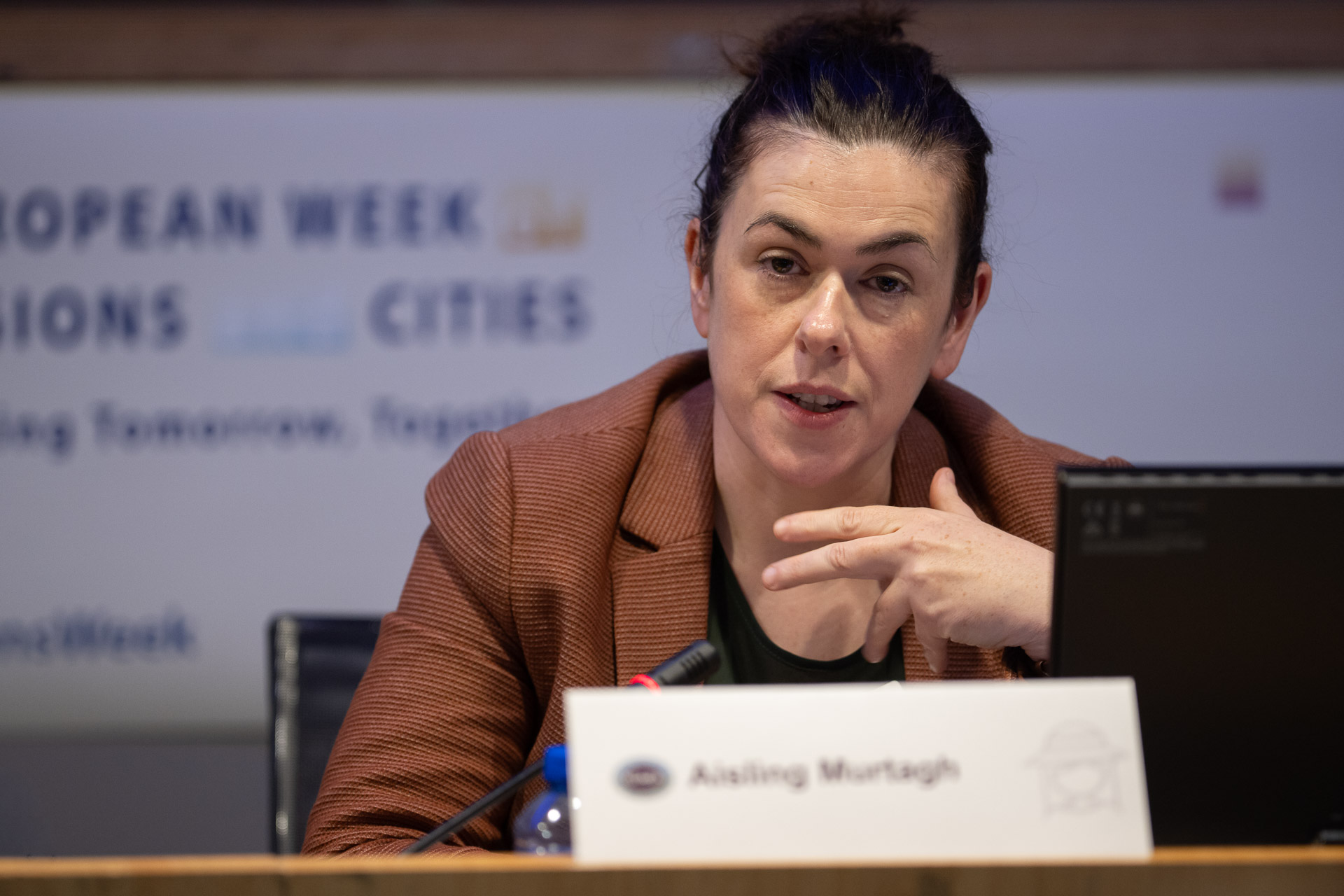
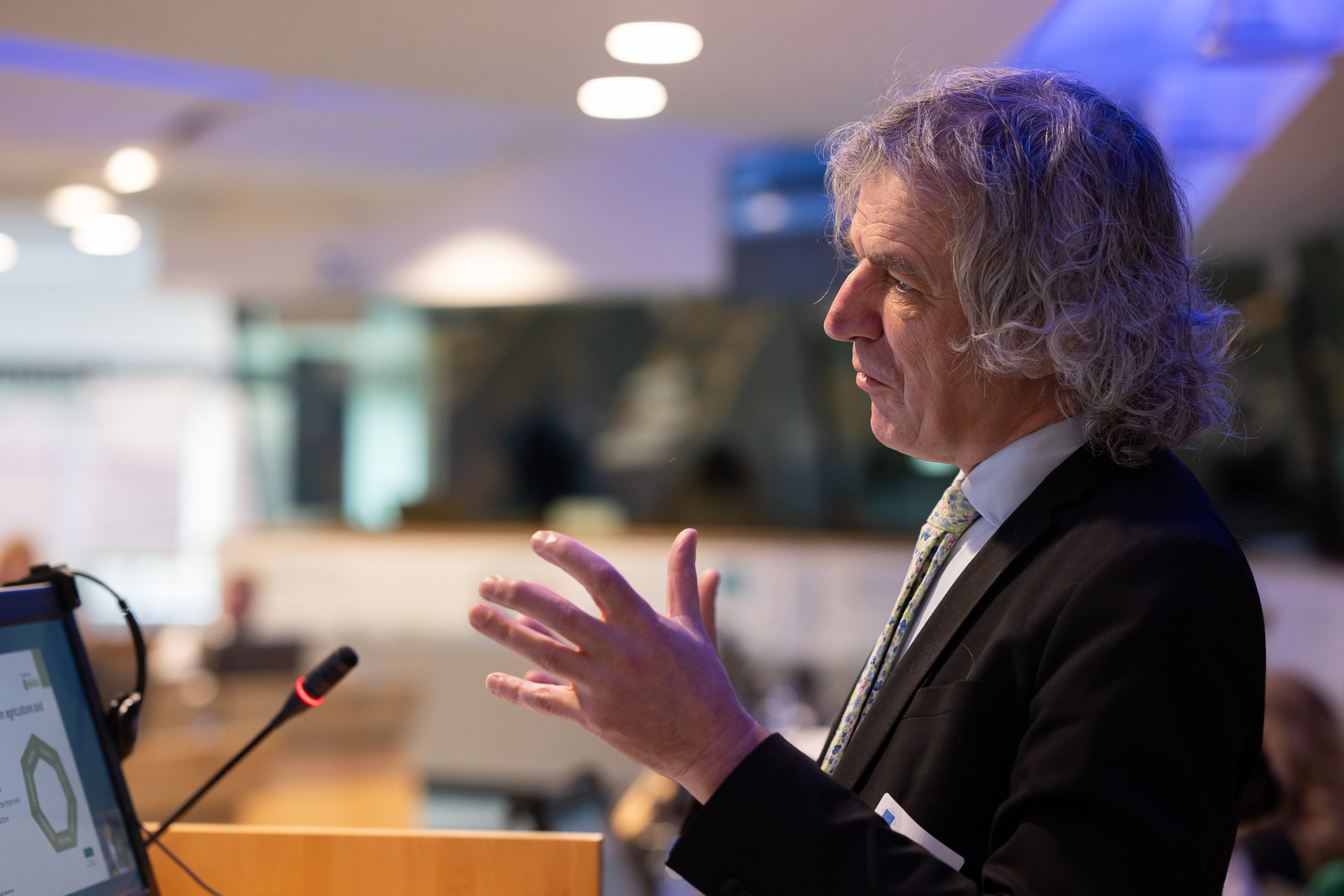
Dr Aisling Murtagh, FLIARA postdoctoral researcher at the University of Galway, opened the session by introducing one of the most technical yet crucial elements of the project’s policy legacy: gender benchmarking. In clear and measured language, she explained that benchmarking, in the FLIARA context, was not a bureaucratic spreadsheet exercise but a strategic tool to expose gaps, compare systems, and drive accountability. Benchmarking, she suggested, becomes powerful only when it goes beyond “ticking boxes” to identify what truly works on the ground, where barriers persist, and where policy ambition fails to translate into practice.
She reminded the audience that FLIARA had mapped existing policy frameworks, analysed gaps across Member States, and distilled women’s real-world experiences into benchmark criteria aligned with the EU Gender Equality Strategy. The result: a framework that could help policymakers evaluate whether policy measures genuinely address women’s needs in rural innovation — or merely appear to do so. But benchmarking alone was not the destination. “It must be part of a wider policy toolbox,” she stressed, “and it must work alongside impact assessments, gender audits, and participatory policy design.” Her message was clear: Europe has tools — now it must use them with intention.
From there, the session moved seamlessly into the policy landscape, with Professor Willem Korthals Altes from Delft University of Technology translating the project’s findings into a tangible blueprint for decision-makers. His core argument was disarmingly simple: rural women cannot innovate inside systems that are not designed for them. To fix this, he laid out FLIARA’s now well-recognised model of seven enabling networks — the invisible infrastructures that shape a woman’s capacity to succeed: social networks, financial-safety networks, work–life systems, economic networks, advisory networks, learning networks, and political networks.
Policy, he argued, must stop treating women’s barriers as individual weaknesses and instead strengthen the systems around them. Whether through childcare solutions, gender-responsive advisory services, access to finance, local procurement channels, or genuine representation in decision-making spaces, these seven networks offered policymakers a practical map for catalytic change. He reminded participants that the project’s 60 policy briefs and forthcoming booklet were not theoretical documents but instructions for action—tools ready for use at local, regional, national, and EU levels.
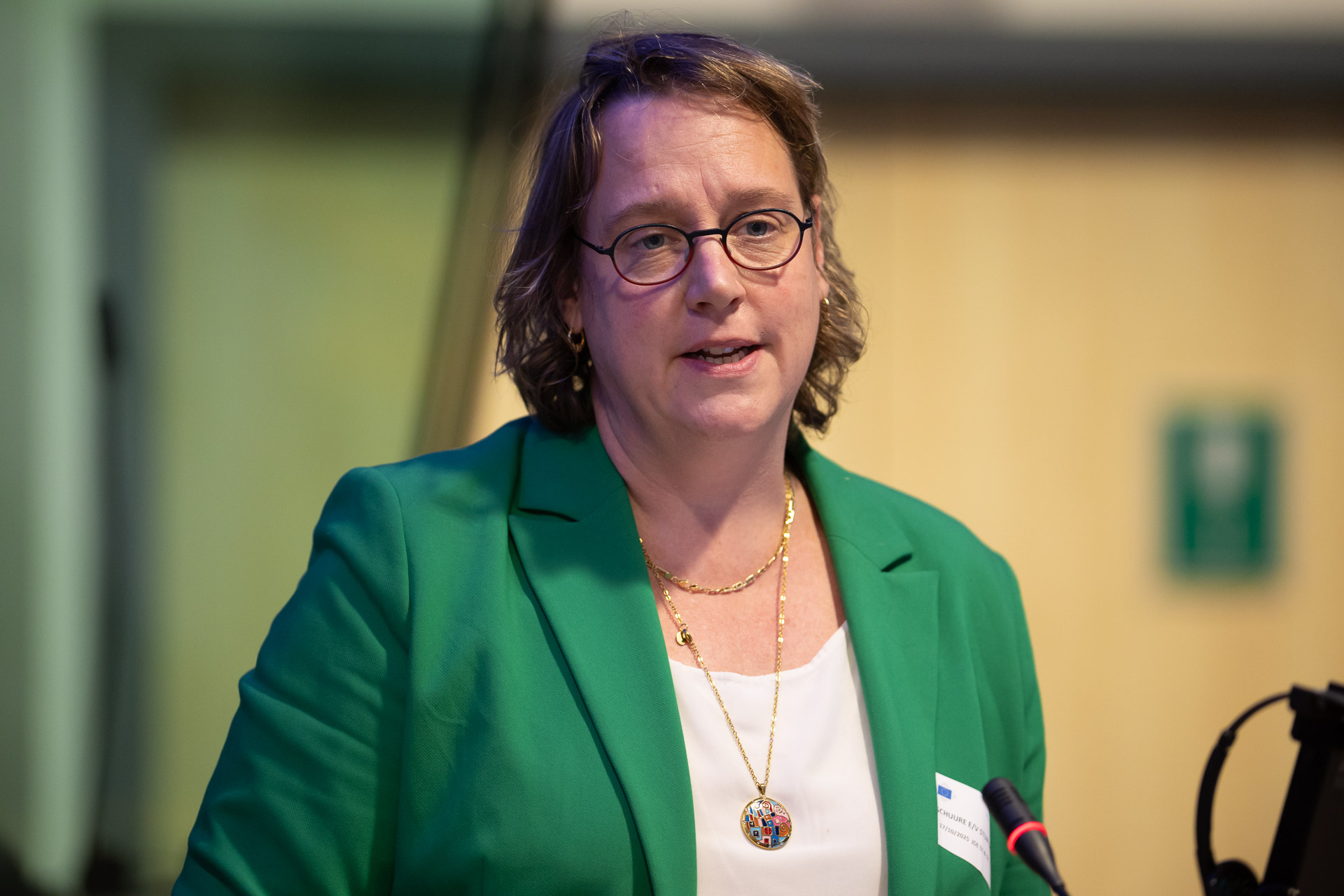
To wrap up the policy block, Assistant Professor Gerdy Verschuuren-Stoop from Delft University of Technology took the floor to guide participants into the afternoon’s Policy Workshop, where everyone — including ambassadors, policymakers, civil society, and researchers — would co-create European-level recommendations. “After today,” she smiled, “you will not only have attended FLIARA—you will be part of it.” Her intervention served as a bridge: the discussion would not end at the plenary level but continue in working rooms where ideas would be transformed into concrete proposals.
Before closing the session, the conversation returned to the heart of the project: the women innovators themselves. Ambassador Linda Kelly from Germany, speaking from the floor, shared her journey as an organic farmer in southern Germany, where she has pioneered the production and direct marketing of sweet lupines. For her, success had not come from a single enabler but from a combination of belief, resilience, family support, and networks she could trust. She spoke candidly of the long road of explaining a product no one knew, of setbacks that demanded persistence, and of the strength she found in the FLIARA community. “When women support each other,” she told the room, “we can achieve so much more. A strong network is not a luxury—it is a lifeline.”
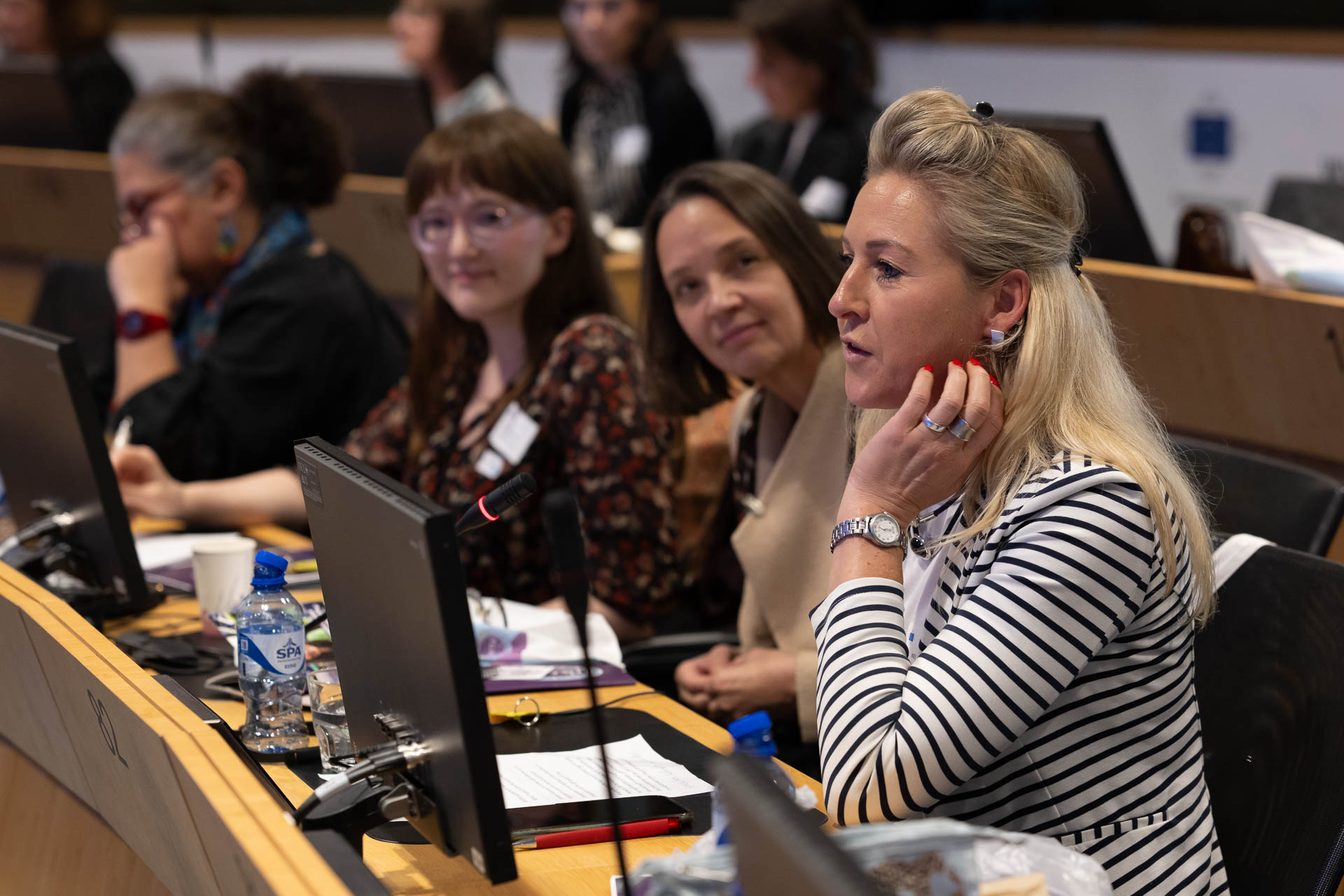
Finally, as the session concluded, another ambassador— Sonja Jokiranta from Finland—voiced a question that resonated across the room: “If a regional authority with limited resources can only focus on one area first, which network would have the biggest impact for women innovators?” Willem’s answer was immediate: start with political networks and gender mainstreaming. If every policy begins with a gender-responsive mindset, he argued, all other networks become easier to repair. It was a fitting closure — concise, strategic, and rooted in structural change.
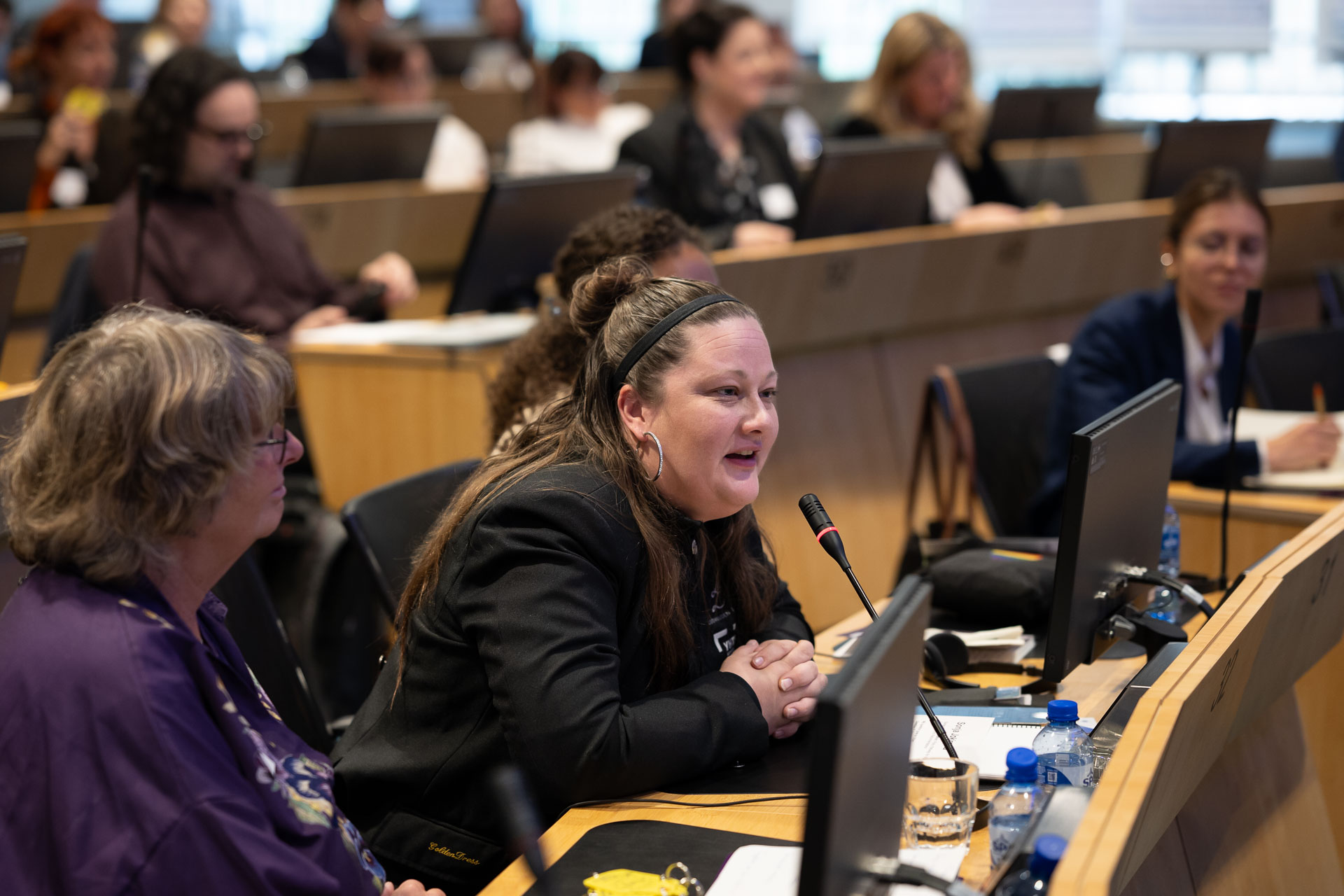
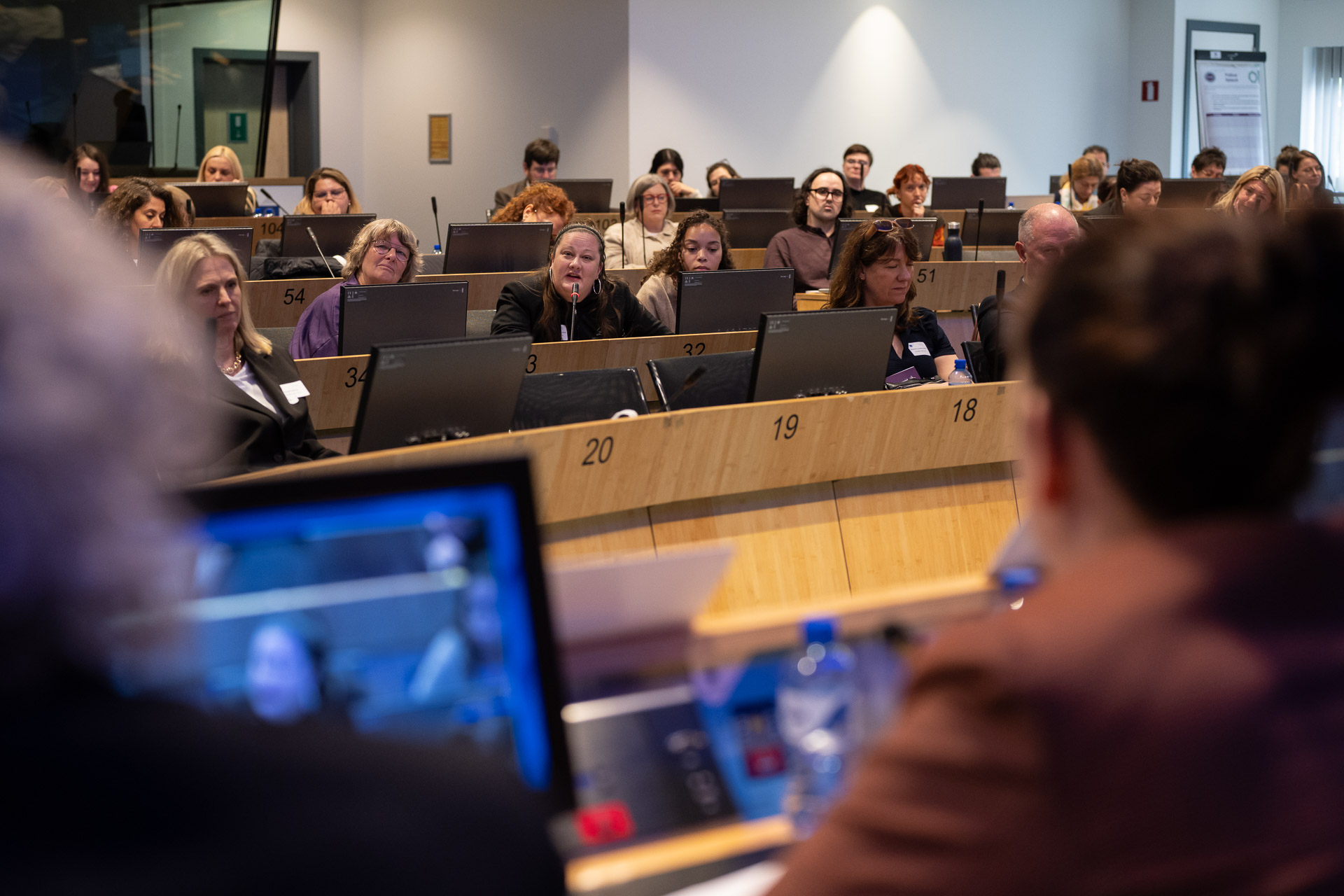
With that, Session 3 came to a close: research had been transformed into a policy roadmap — and ambassadors had once again ensured that the policies discussed remained connected to real lives, real challenges, and real ambitions.
Rethinking Rural Innovation: Gender, Sustainability and Ecosystems
The afternoon panel, “Rethinking Rural Innovation, Gender, Sustainability and Ecosystems”, marked a decisive shift in the conference narrative—from presenting evidence to confronting the systemic conditions that either enable or obstruct women-led innovation in rural Europe. Moderated by Michelle Perello, Chief Executive Officer at Consulta Europa, the session brought together seven voices from EU networks, sister projects, academia, policymaking, and the European Commission. What emerged was a clear message: innovation in rural regions is not only a technological or economic process — it is social, cultural, relational, and deeply gendered. And unless governance structures recognise this reality, inequalities will continue to reproduce themselves under the label of “innovation”.
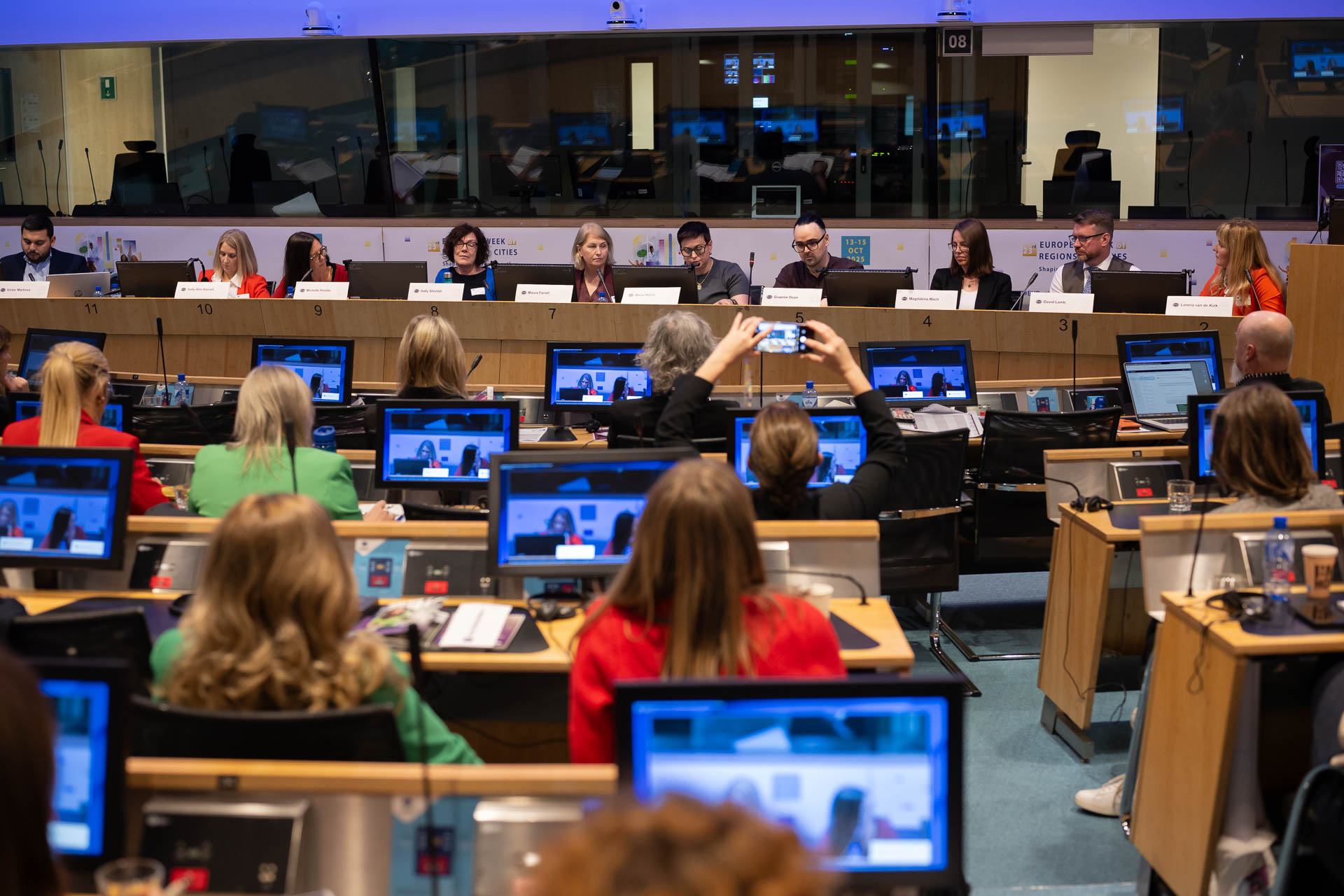
Innovation ecosystems: the role of networks and peer support
Opening the exchange, David Lamb, Team Leader of the CAP Implementation Contact Point, EU CAP Network, underscored the transformative role of networks in surfacing and scaling promising practices. With more than 600 projects linked to jobs, growth and equality in their database, Lamb highlighted that the demand for gender-sensitive innovation is real — and growing — across Member States. The CAP network’s awards and calls for inspiring initiatives demonstrate that visibility and example-setting matter: when women innovators are showcased, more women step forward.
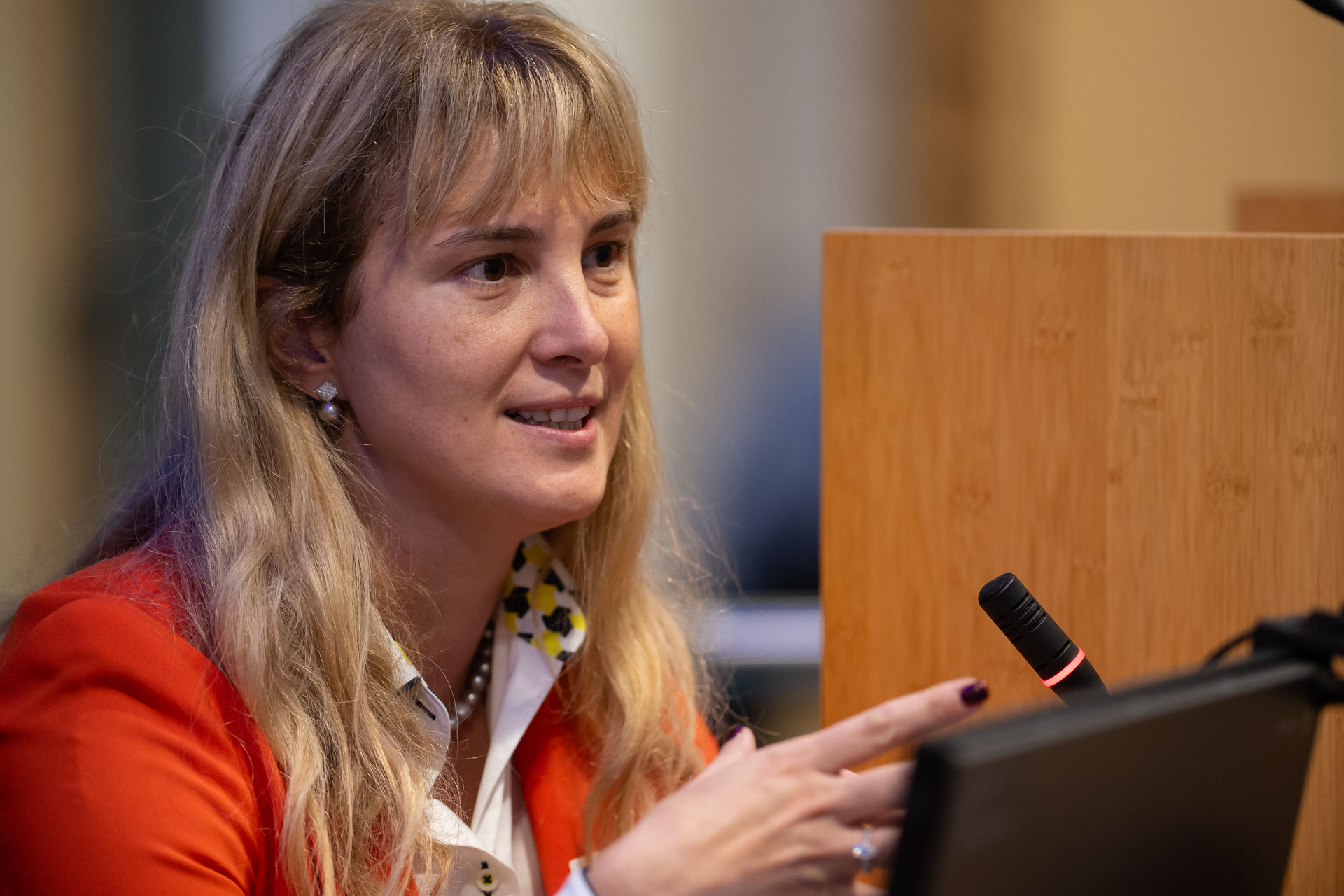
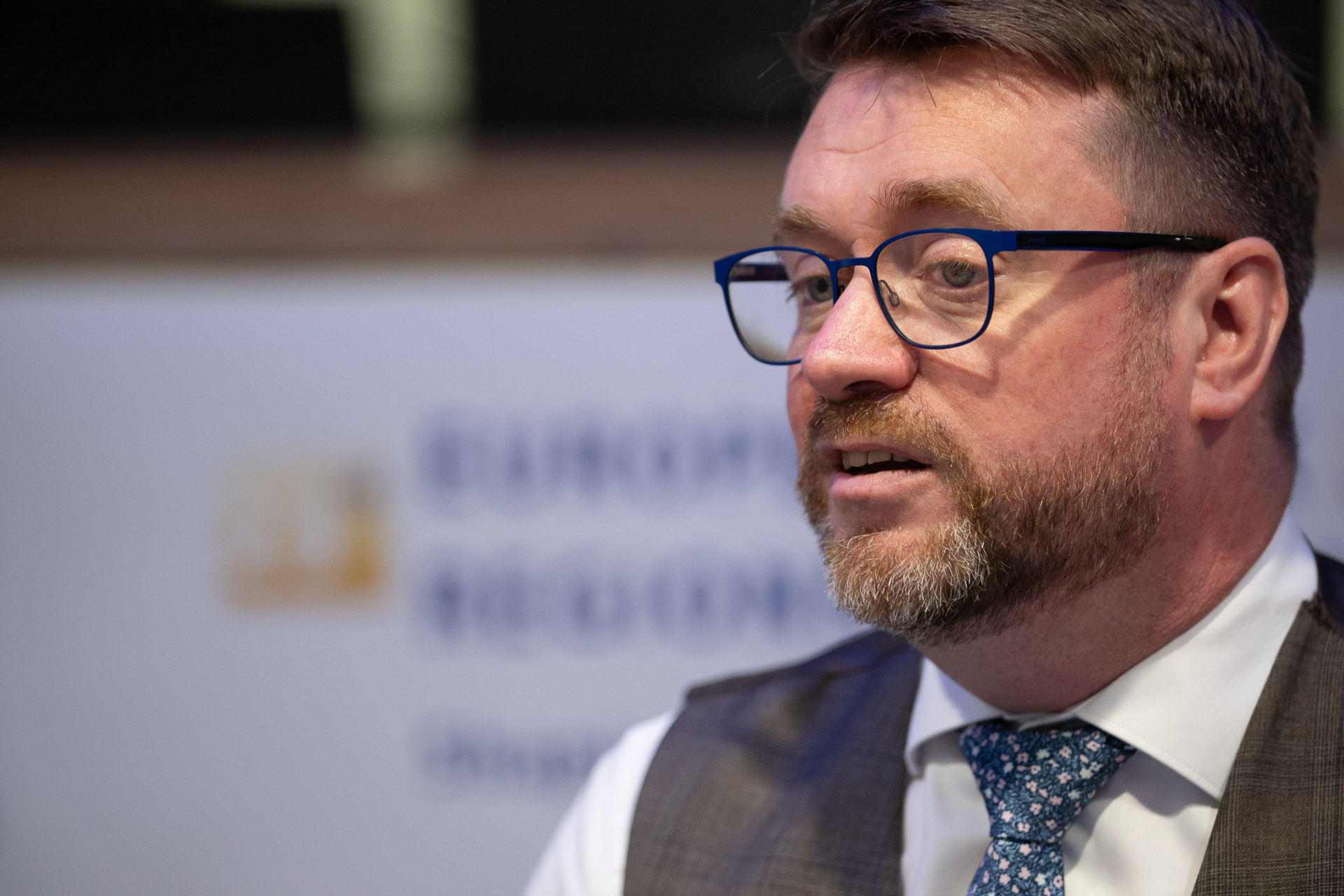
From a practitioner’s perspective, Lorena van de Kolk, Coordinator of the Gender Alliance for Innovation in Agriculture (GAIA) and leader of the agri-food team in Brussels of Schuttelaar & Partners, emphasised the power of peer learning, safe spaces, and cross-border connection. Through her GAIA network, she witnesses daily how women advance faster when they can exchange failures as openly as successes. Innovation, she argued, is “born in the field, in families and cooperatives—not only in labs”, and therefore networks must empower women as subjects of innovation, not supporting actors. Her contribution reinforced a core insight: innovation ecosystems thrive when women can connect, be visible, and be believed.
Beyond the economic lens: a feminist and systemic perspective
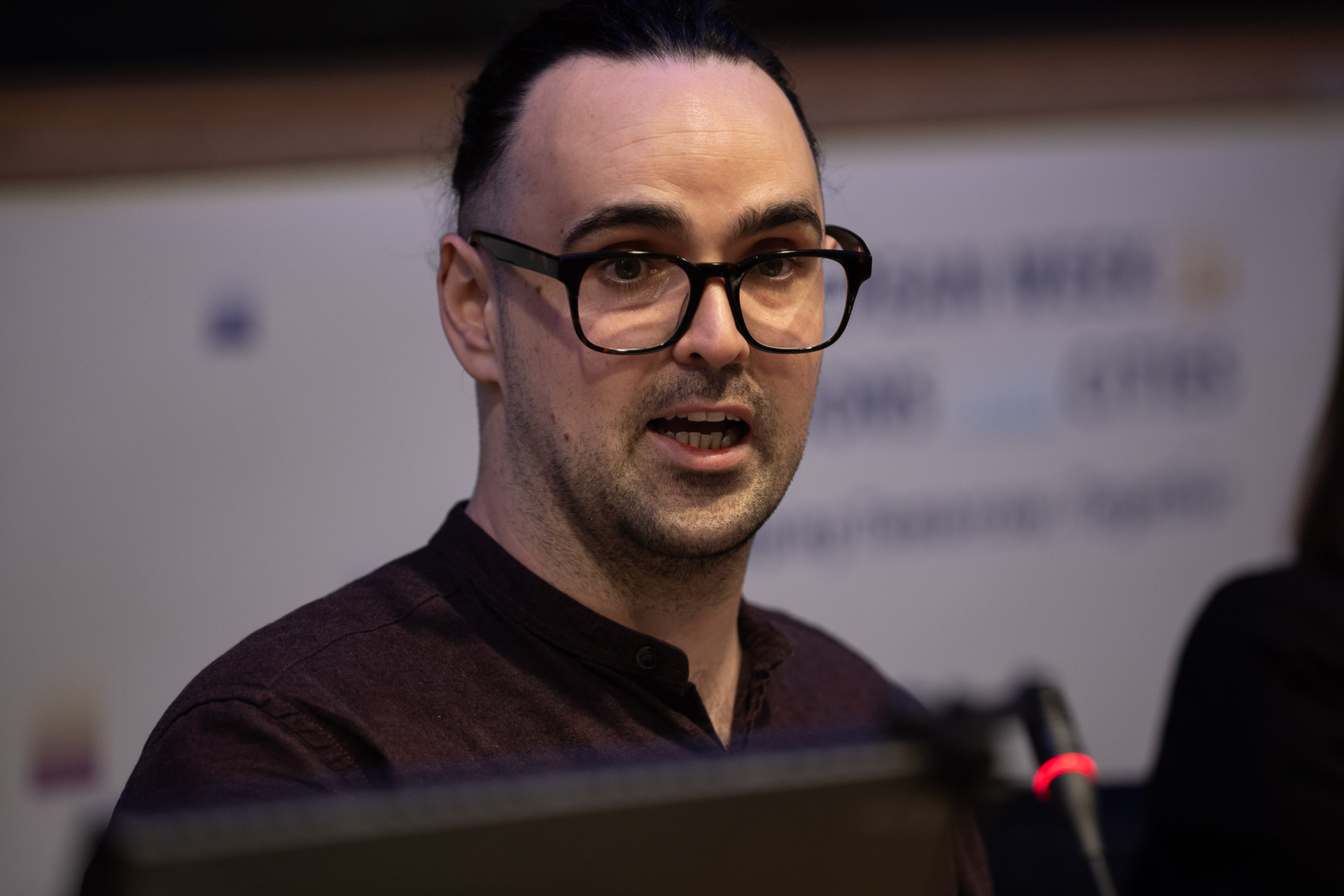
A deeper structural critique came from Graeme Dean, who coordinates the SWIFT project, who challenged the economic reductionism that still dominates rural policy. If innovation continues to be measured only in growth, export potential, and scalability, thousands of women-led innovations — especially in agroecology and community-rooted models — will remain undervalued or invisible. Dean stressed the soft conditions necessary for innovation to flourish: emotional support, confidence, social acceptance, and protection from stigma.
He pointed to historic structural inequalities, arguing that without recognising the reproductive and community labour that women perform — “the labour that sustains everything, yet appears in no budget line” — policy will keep misdiagnosing the problem. His intervention made the room visibly pause: innovation cannot be sustained if the women driving it are socially unsupported and institutionally unseen.
Governance and multi-level policy: from optional to mandatory
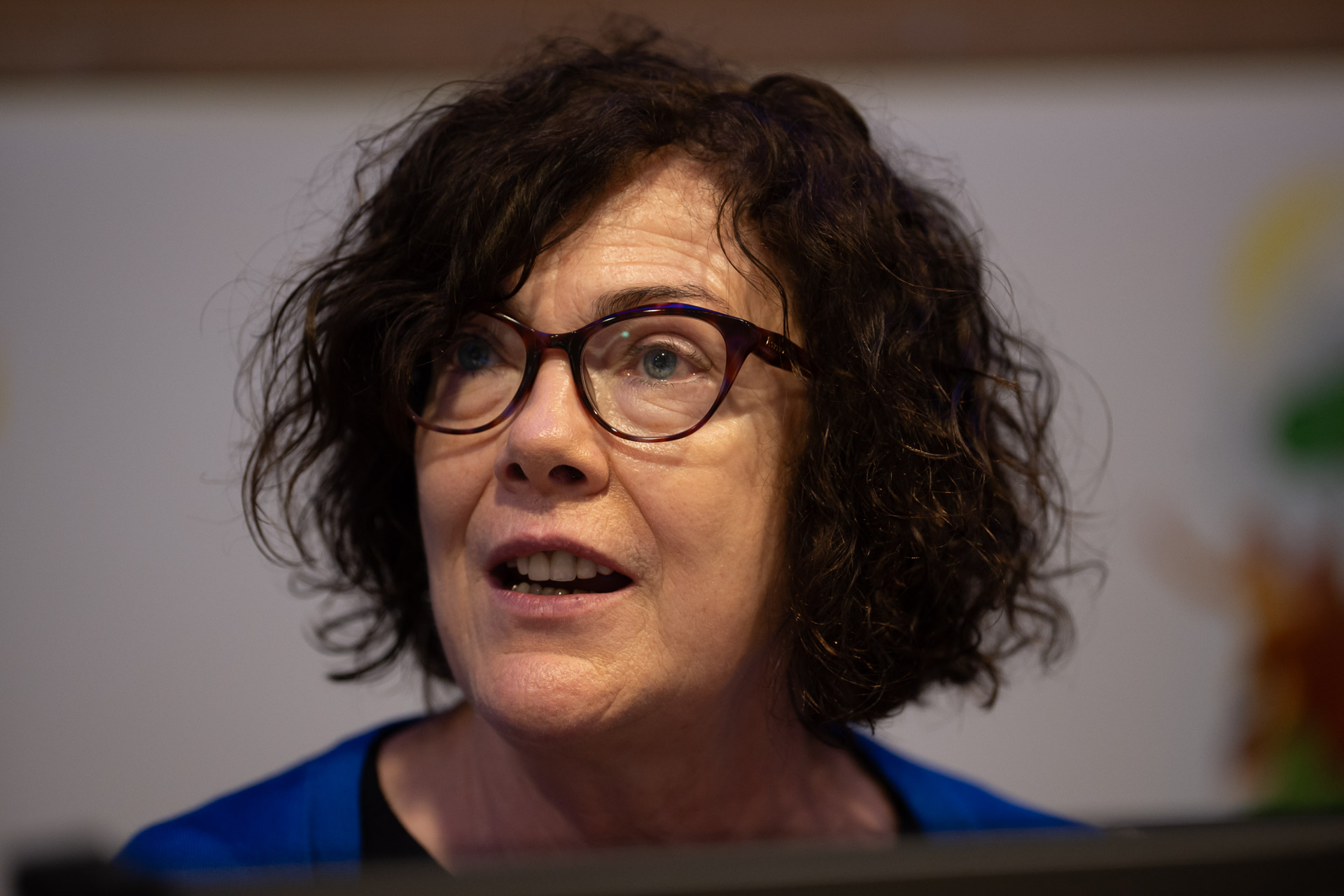
The governance gap was then addressed by Professor Sally Shortall, Project Coordinator of Grass Ceiling, who offered a clear diagnosis: gender equality is still treated as an optional add-on in rural policy, instead of a requirement. While acknowledging progress through specific measures, she warned that mainstreaming has largely failed. “Unless it is compulsory in the CAP regulation, it will not be prioritised by Member States,” she argued, drawing on extensive comparative research.
Shortall also warned against a one-size-fits-all entrepreneurial model. Many women-led innovations do not aim to employ ten
people or conquer export markets — and policy must stop penalising those who innovate at a local scale in community-based and low-growth models that generate social value and territorial resilience. “Support must adapt to women’s realities, not the other way around.”
Irish MEP Maria Walsh brought a candid political perspective to the panel, underscoring that policy, funding, and leadership cannot be separated when addressing gender inequalities in rural innovation. She stressed that data remains the critical missing piece, noting that European and national institutions “lean on data to act”—yet current information on rural women, their needs, and their economic participation is still fragmented or insufficient.
Walsh voiced frustration at persistent imbalances: women represent 40% of Europe’s entrepreneurs, yet receive less than 1% of available capital, a contradiction she labelled “simply a formula that does not add up.” She also criticised rigid funding models that only reward high-growth, export-oriented ventures, leaving those who wish to innovate locally with little support. Entrepreneurs who want to remain embedded in their region, she argued, “should not be punished for choosing to serve their community instead of scaling.”
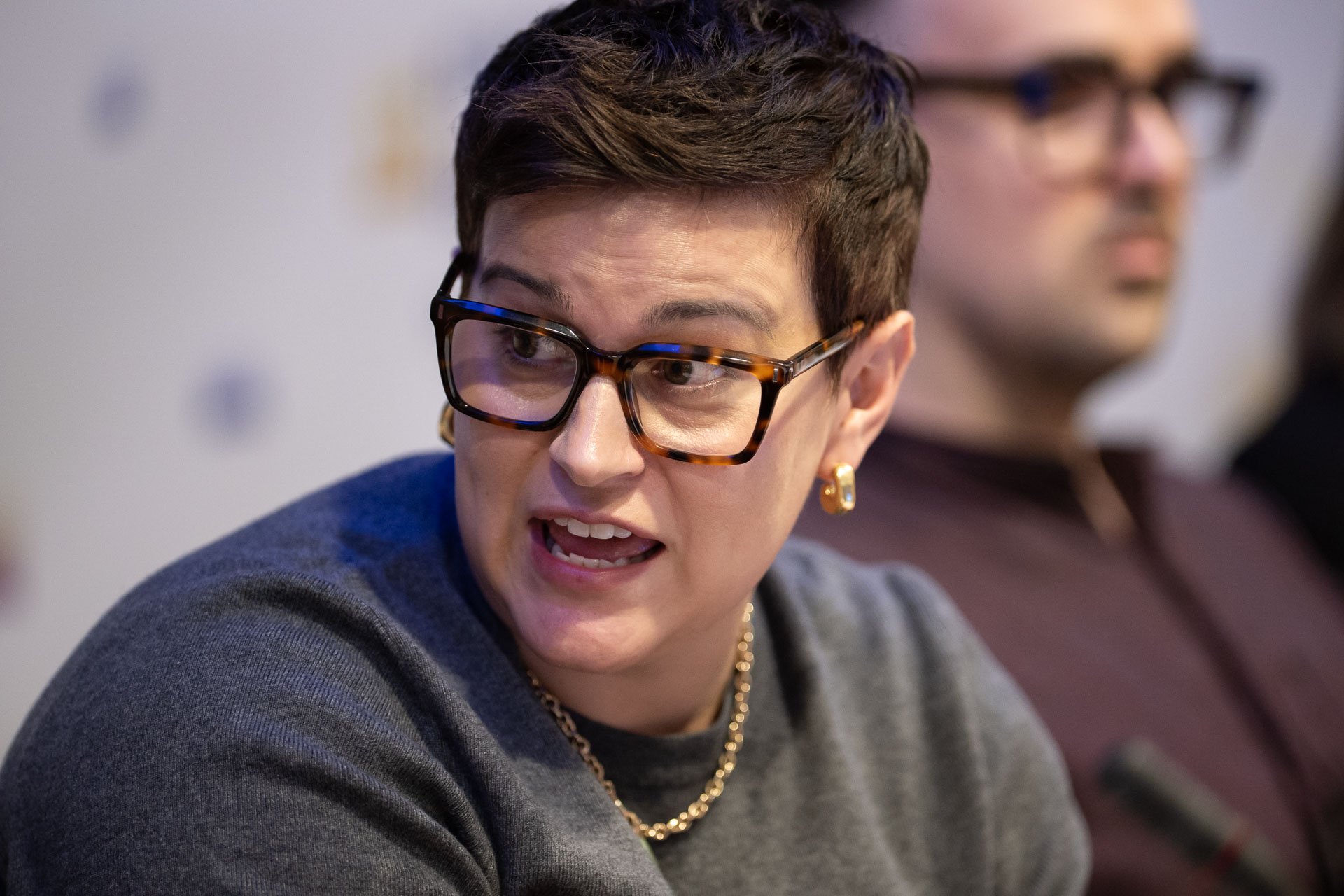
Reflecting on shifting political tides in Europe, Walsh warned of a growing risk-averse policy environment, cuts in key funding streams, and the rise of more conservative positions on gender. The next 18 months, she said, will be decisive for securing ring-fenced measures for generational renewal, women farmers, and gender equality within the CAP. “It cannot be a nice-to-have — it must be a need-to-have,” she insisted.
She also spoke from personal experience as a farmer, describing everyday gender dynamics that remain deeply rooted in culture, not only in policy. Despite humour, her message was sharp: rural women are still expected to shoulder more responsibility, with less support, fewer resources, and structural barriers that slow or silence their contribution. Yet these same women drive household decisions, purchasing power, and rural vitality — a paradox she said must be corrected through networks, investment, and political will.
Tools, opportunities, and the potential of EU instruments
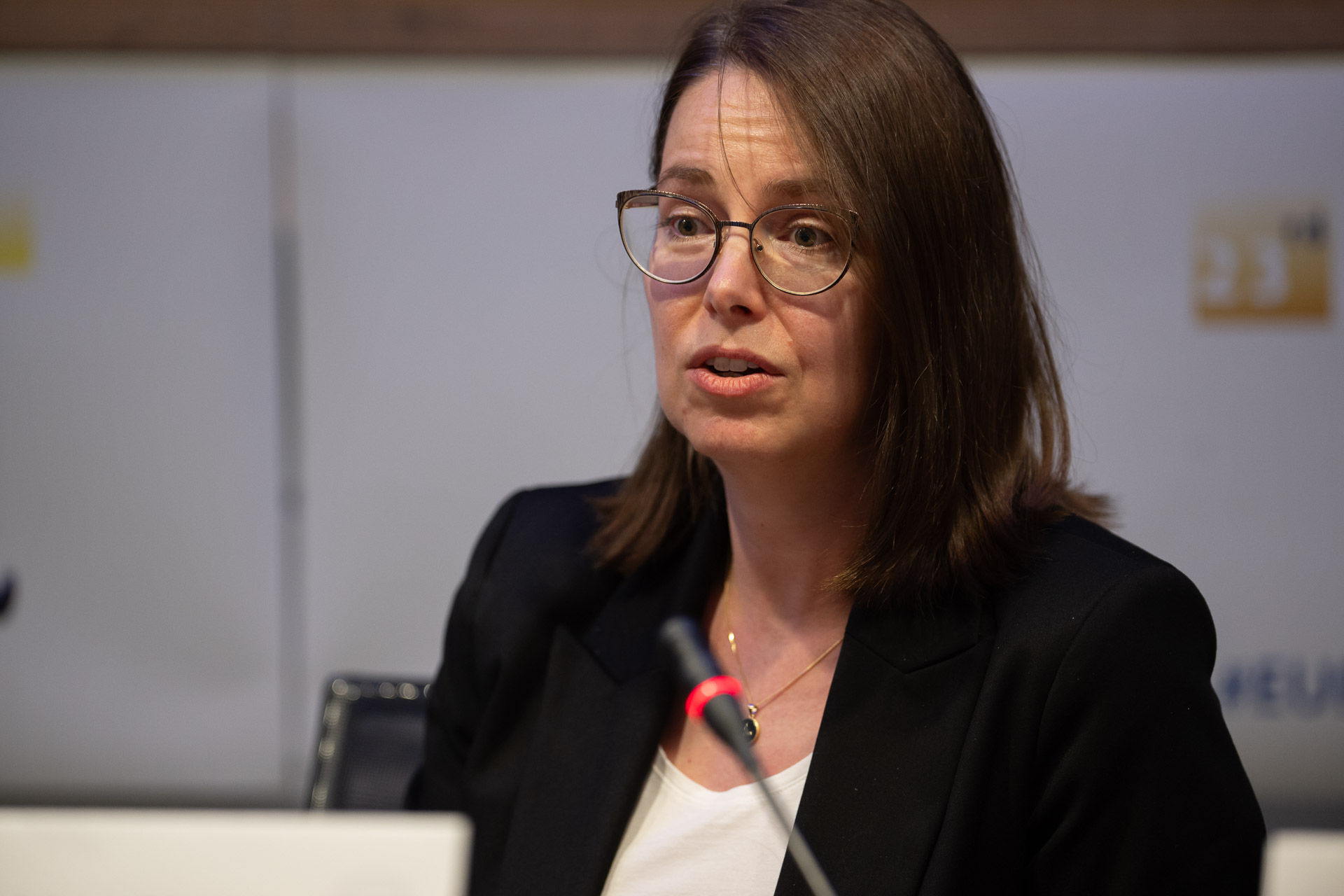
Bringing the institutional perspective of the European Commission, Magdalena Mach, Policy Officer in the Research & Innovation Unit of the European Commission’s DG Agriculture and Rural Development, highlighted that women have much to gain from EU innovation instruments — particularly Operational Groups under EIP-Agri, which allow 100% funding coverage, advance payments, and multi-actor cooperation. She stressed that women’s natural strengths in collaboration, networking and problem-solving make them well-suited to lead such initiatives. However, she also pointed out that access depends on awareness and confidence. The tool exists — the challenge is ensuring women feel entitled to use it.
A call to action: innovation with women at the centre
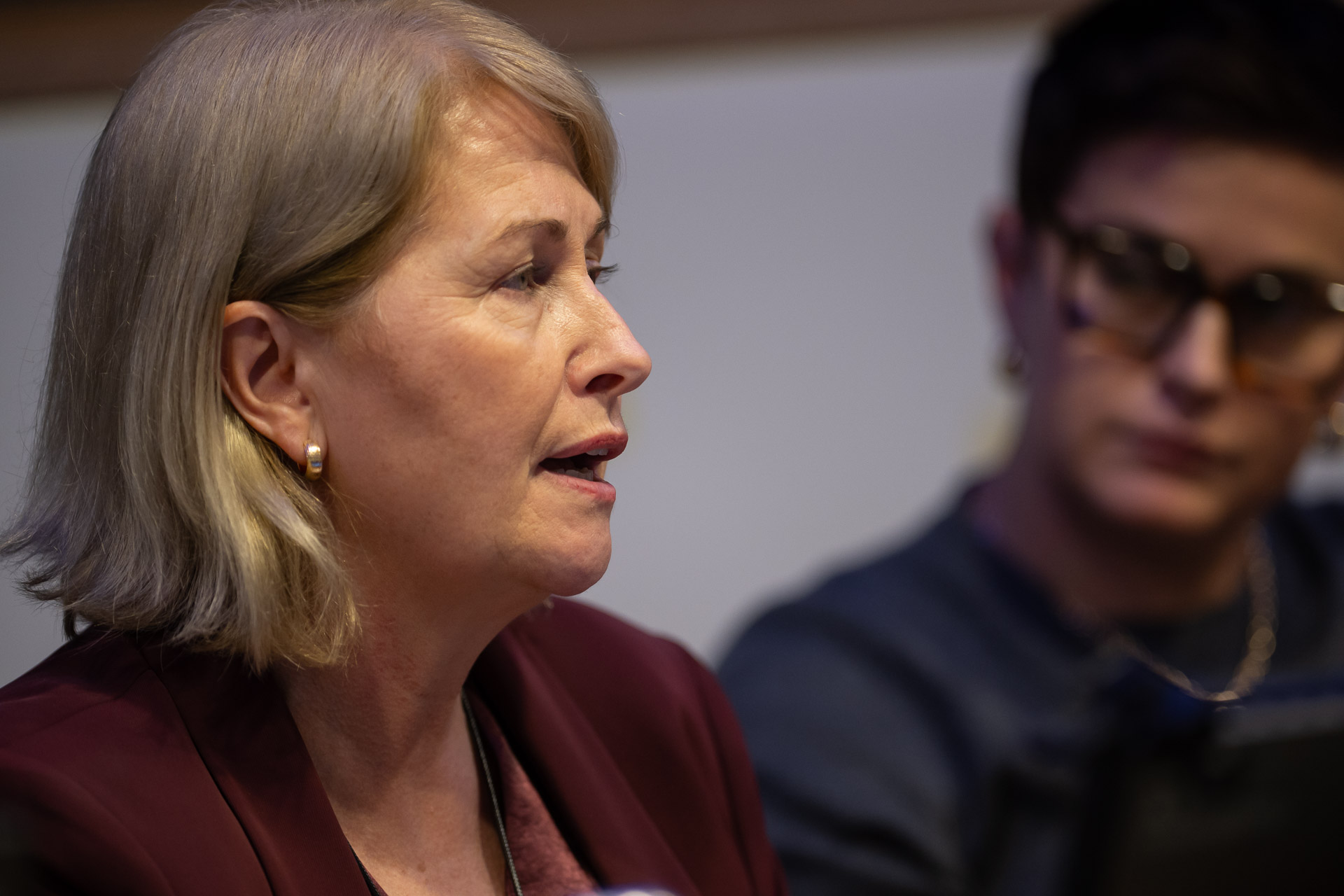
Closing the panel, Dr Maura Farrell (FLIARA Coordinator) drew the threads together. Her message was clear: women are not asking for permission to innovate — they are already innovating. What they need is an enabling environment that recognises diverse ambitions (from small-scale to export-driven), values care and community, and includes women in every level of governance. She reminded the room that the success of women innovators is never individual — it is collective, supported by families, communities and networks. Future rural policy must reflect that social reality.
This panel did not simply “rethink” rural innovation — it reframed it. It exposed the mismatch between how innovation is lived by women on the ground and how it is too often governed from above. It called for a shift from programmes that support projects to policies that transform systems. The path forward is now evident: innovation in rural Europe will only be sustainable, inclusive and effective when women are not an afterthought in the ecosystem but its architects.
Building FLIARA’s Legacy: Networks, Resources and Collective Action
Knowledge only becomes transformative when it is shared, applied and sustained. With this principle, Session 4 focused on how FLIARA’s results will live beyond the project’s timeline—through strong networks, practical tools and the continuing leadership of its ambassadors.
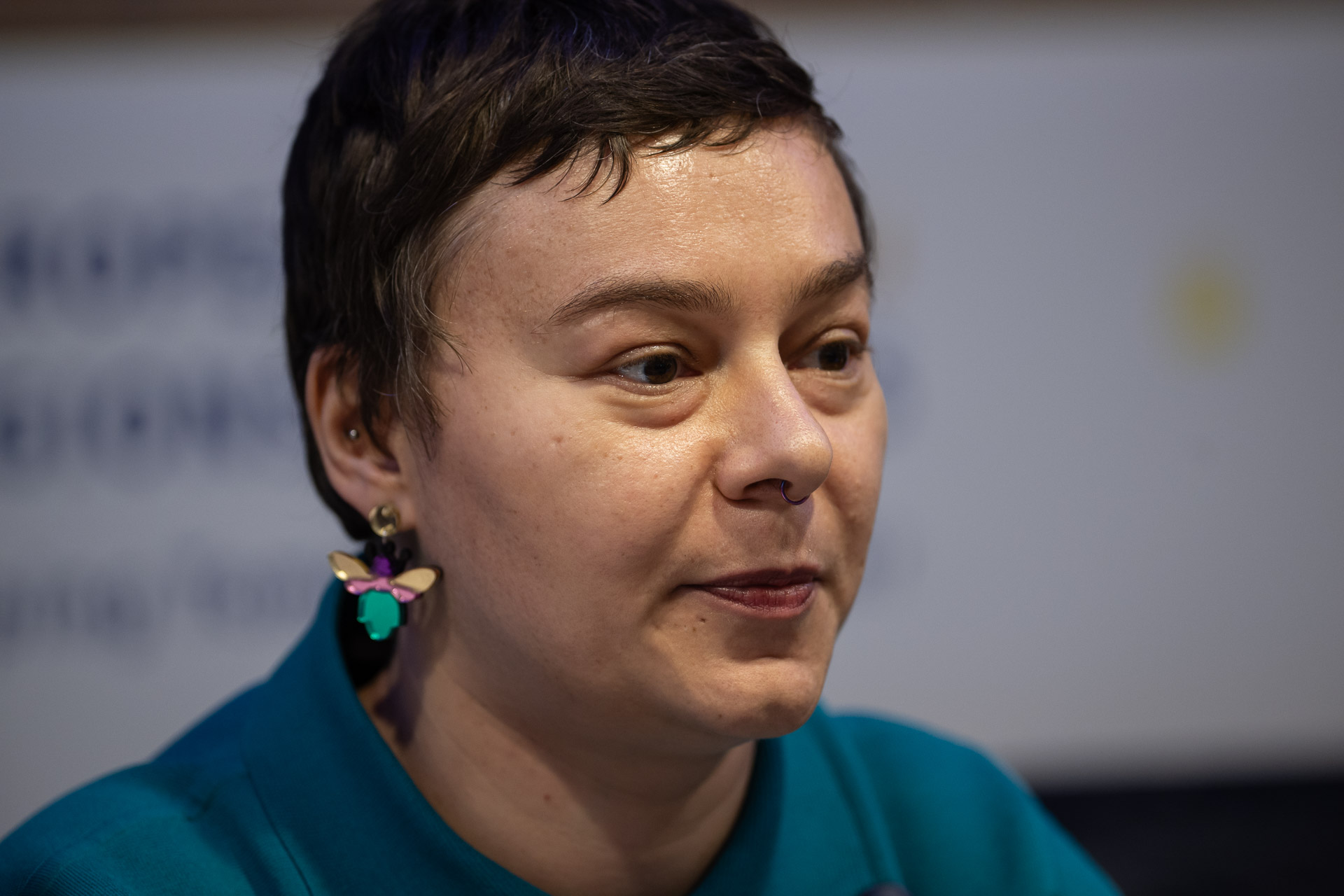
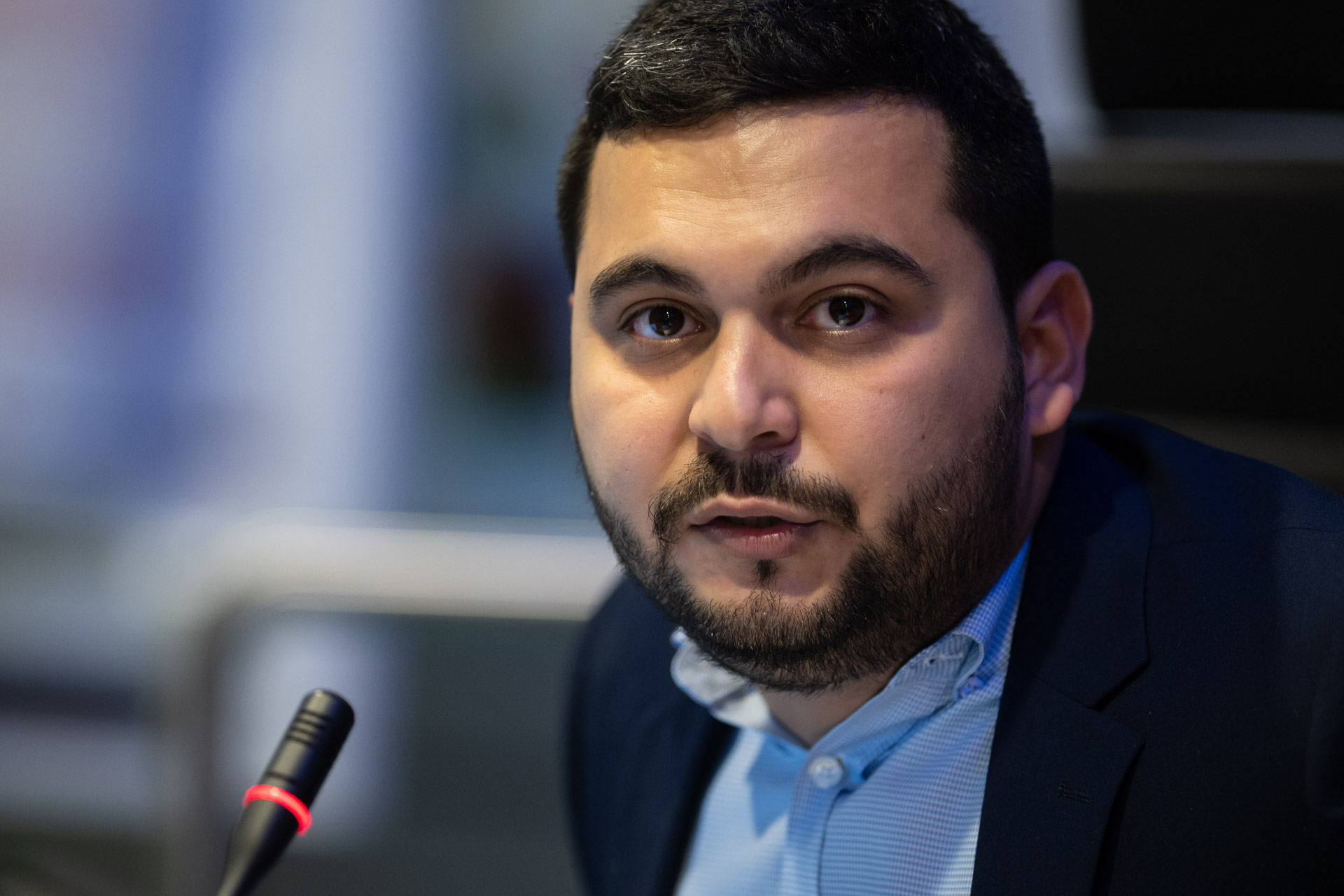
Anastasia Oprea from the European Network for Community-Led Initiatives (ECOLISE) opened the session by presenting the evolution of the FLIARA Community of Practice (CoP)—a cornerstone of the project’s legacy strategy led by the University of Galway team. She highlighted how the community was built through a combination of online exchanges, four regional in-person workshops, policy dialogues and an ongoing support structure for ambassadors. The approach, she emphasised, was not merely to “involve” women in activities but to empower them as co-creators: “a group of people who share a purpose and shape it together in practice.”
Through this framework, ambassadors gained visibility, built confidence, exchanged knowledge and developed peer support circles that extend far beyond formal project tasks. Oprea noted that FLIARA’s co-creation method, its ambassador spotlighting, wellbeing safeguards and iterative feedback loops created trust—the essential ingredient for real empowerment.
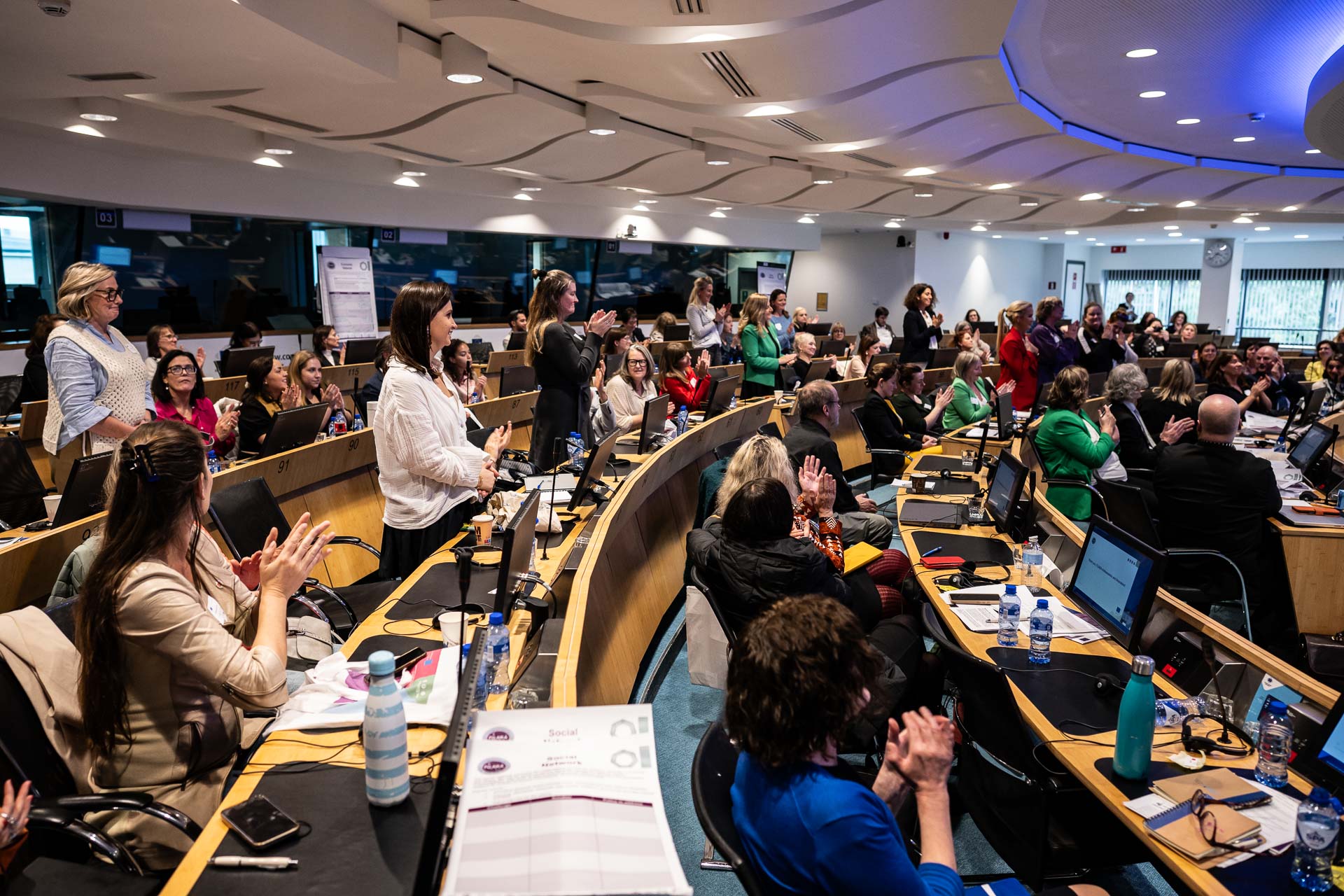
The legacy dimension continued with Victor R. Martínez, EU Communications Manager for FLIARA at Consulta Europa in Spain, who presented the FLIARA Toolkit, now publicly available as a long-term resource. Designed as an open, user-friendly repository, the Toolkit consolidates the project’s knowledge—from conceptual frameworks and research findings to innovation cards, policy outputs and multimedia materials. Martínez emphasised that its purpose goes beyond archiving: it is meant to inspire action, support learning, enable replication and strengthen women-led innovation ecosystems.
Hosted on the FLIARA website for the next two years, the Toolkit allows users to explore more than 200 innovation profiles, filter cases, access deliverables, and navigate guidance materials in a visually engaging and practical way. It also anchors the project’s policy legacy, hosting briefs, workshop outputs and upcoming post-project materials. “It is a living resource,” Martínez stressed, “not a final chapter.”
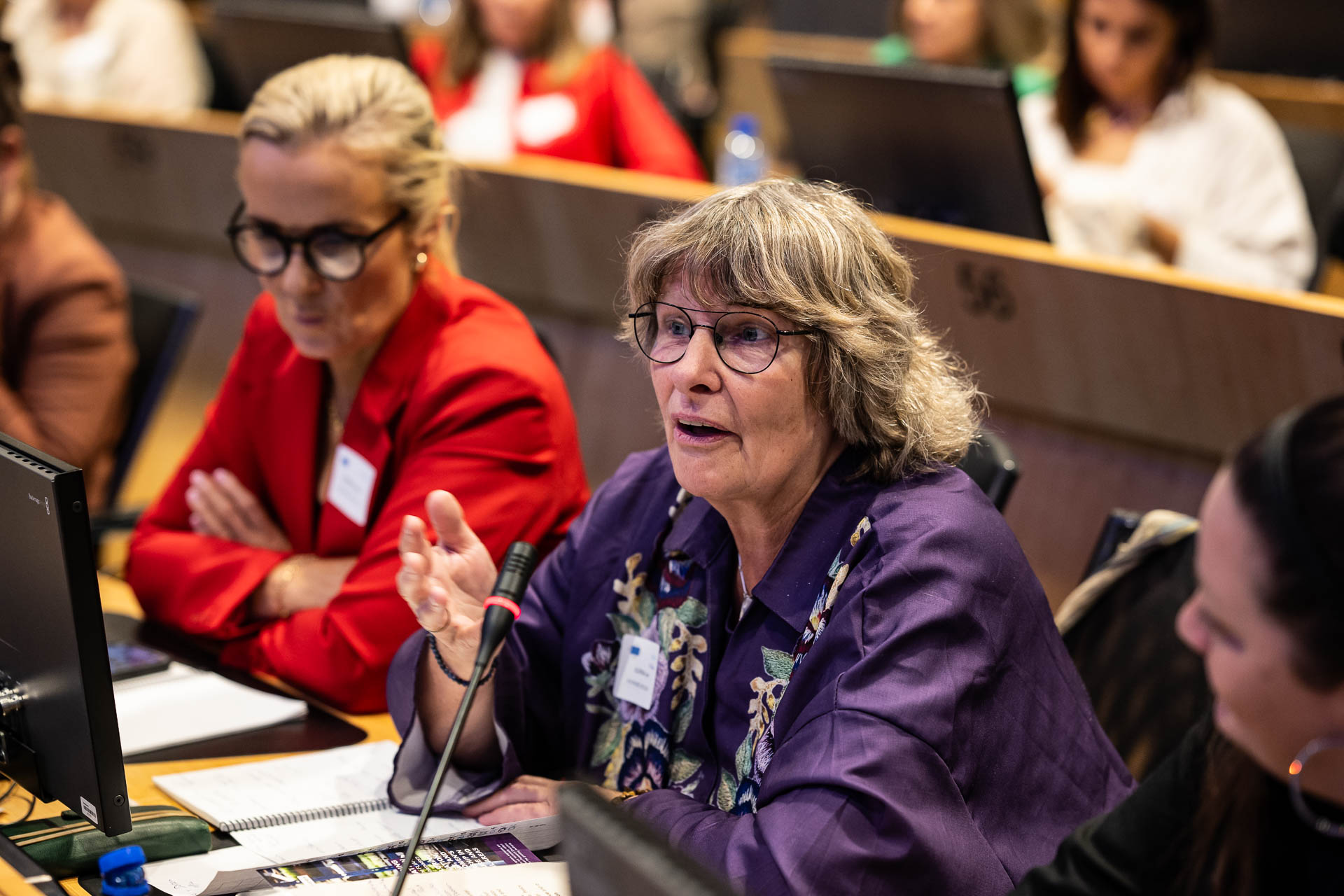
To bring these elements back to lived experience, FLIARA Ambassador, Mieke Elzenga from the Netherlands, offered a grassroots perspective on legacy. Speaking about her journey and the bonds formed through FLIARA, she stressed that networks only create impact when they nurture relationships, trust and continuity. She shared how ambassadors are already co-developing Erasmus+ proposals, supporting each other’s initiatives and engaging policymakers at local and national levels—including a recent visit by ministry representatives to her eco-village. For Elzenga, legacy means doing, not merely documenting: “We must connect the local, the regional, the national and the European levels. Only then can innovation truly move and grow.”
The session concluded with a short Q&A, including a reflection from Dr Murtagh on the role of rural planning and sustainability challenges raised through the research. From the audience, she acknowledged that planning barriers and land-use constraints are recurring obstacles across Europe and confirmed that these themes will continue to inform the project’s ongoing policy work as sustainability frameworks are refined.
From Vision to Implementation: Embedding Gender Equality in EU Rural Innovation
The final panel of the conference shifted the conversation from ideas to action, gathering high-level voices from EU institutions, networks, academia, and civil society. Moderated by Sally-Ann Barrett, the discussion explored one guiding question: how can Europe ensure that women-led rural innovation becomes a permanent, resourced and visible part of EU policy — not an exception, but the norm?
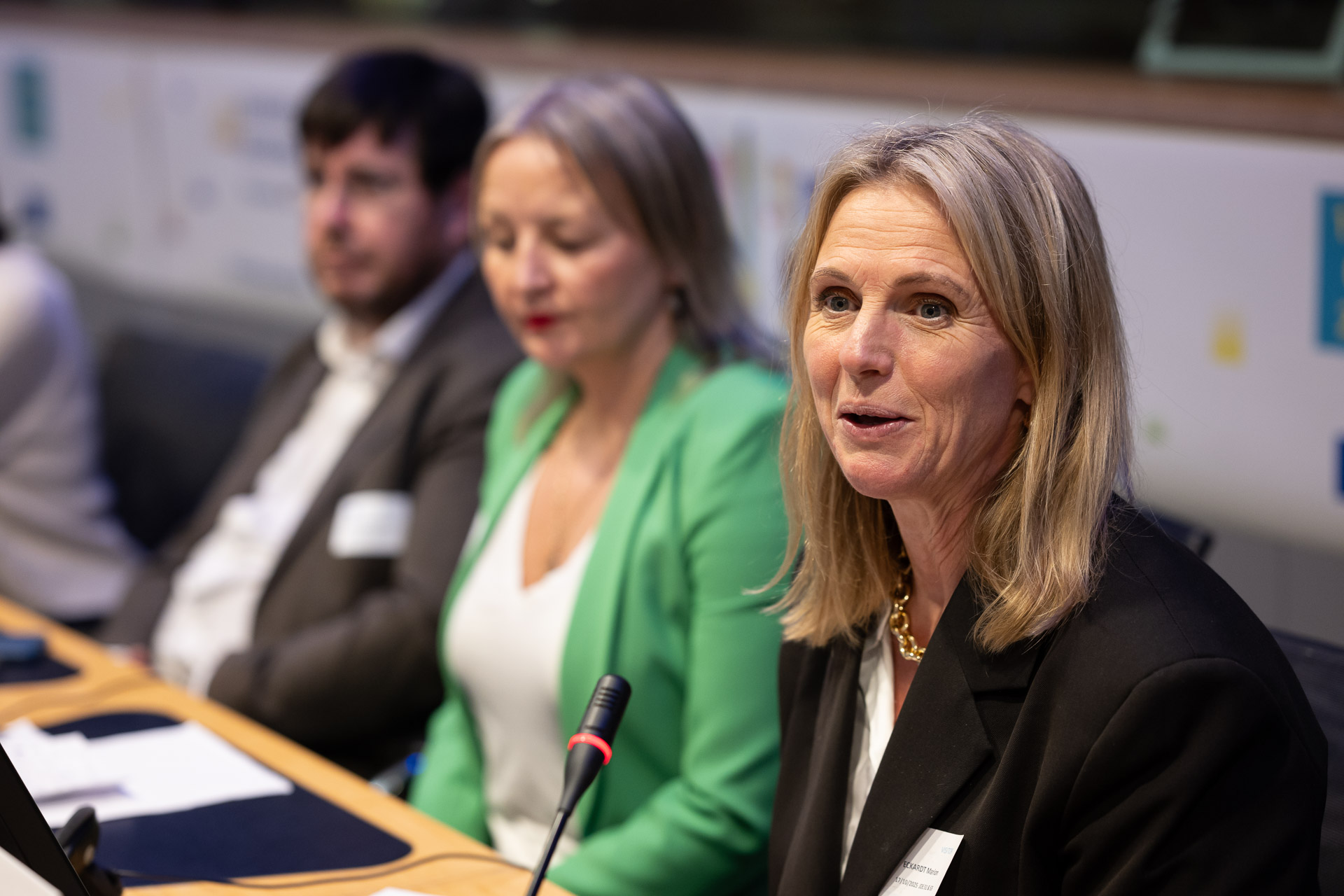
Marion Eckardt, Head of ELARD Knowledge Hub, European LEADER Association for Rural Development, opened with a practical message from the ground. Drawing on her experience with Local Action Groups across Europe, she stressed that leader- and community-led local development (CLLD) remain powerful yet underused tools for women innovators. She emphasised the capacity of local networks to build mentoring structures, solve care-related barriers collectively and fund small first steps that “make the difference between an idea and a viable project.” However, she warned that the next programming period risks prioritising “hard, measurable outputs” over community-building — a shift she described as “a masculine logic that overlooks the social infrastructure innovation needs to flourish.”
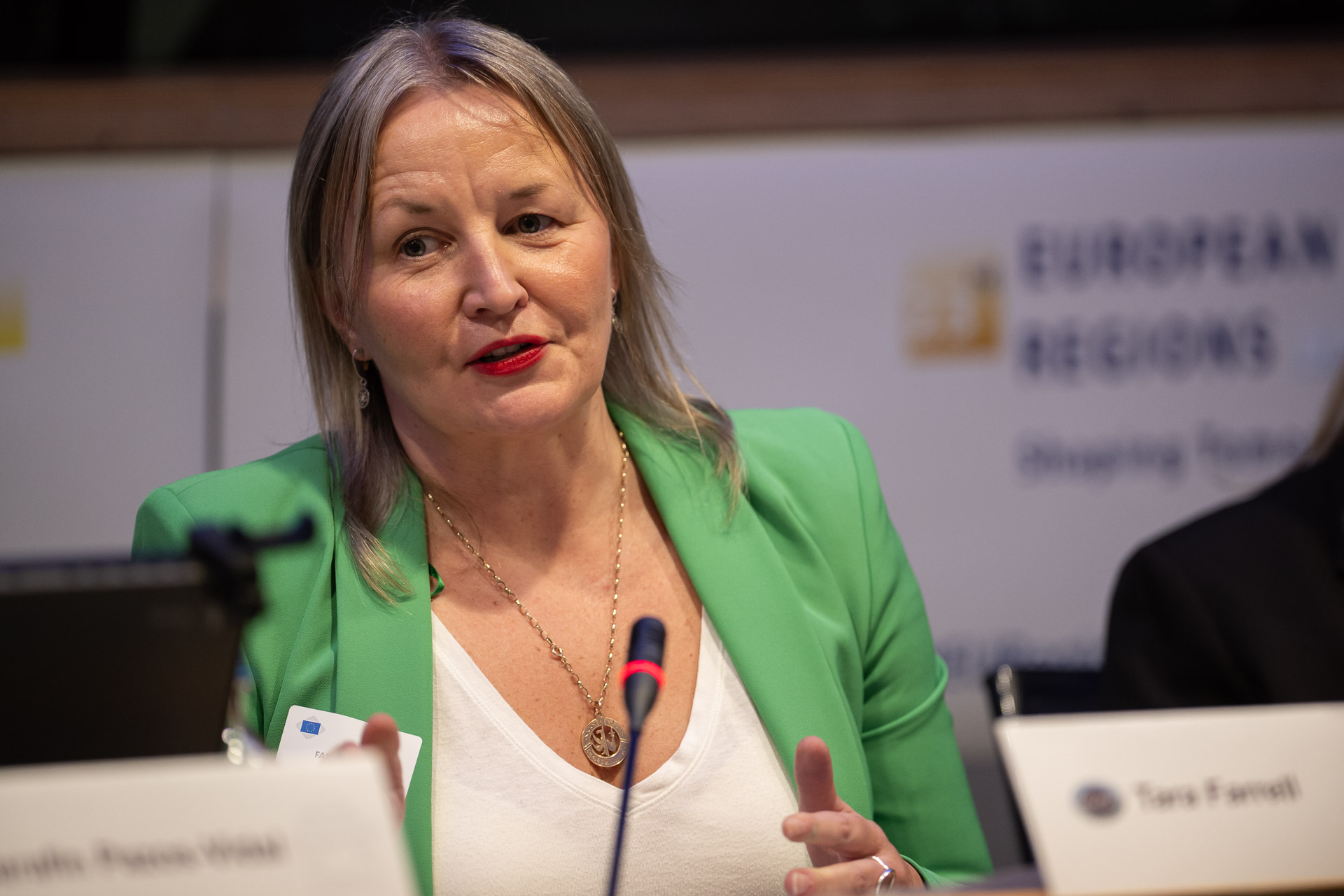
Building on this, Tara Farrell, Chief Executive Officer from Longford Women’s Link in Ireland, argued that visibility must translate into power and continuity. The ambassadors, she said, had proven their effectiveness as role models, connectors and agenda-shapers — but they must now be formally embedded into policy ecosystems, not left as a “project output”. Farrell highlighted the need for accessible resources, storytelling platforms and political pathways, stating that “we cannot hashtag women one day and return to business as usual the next.” Her message was clear: normalising women’s leadership in rural areas is a political choice — and Europe must choose it.
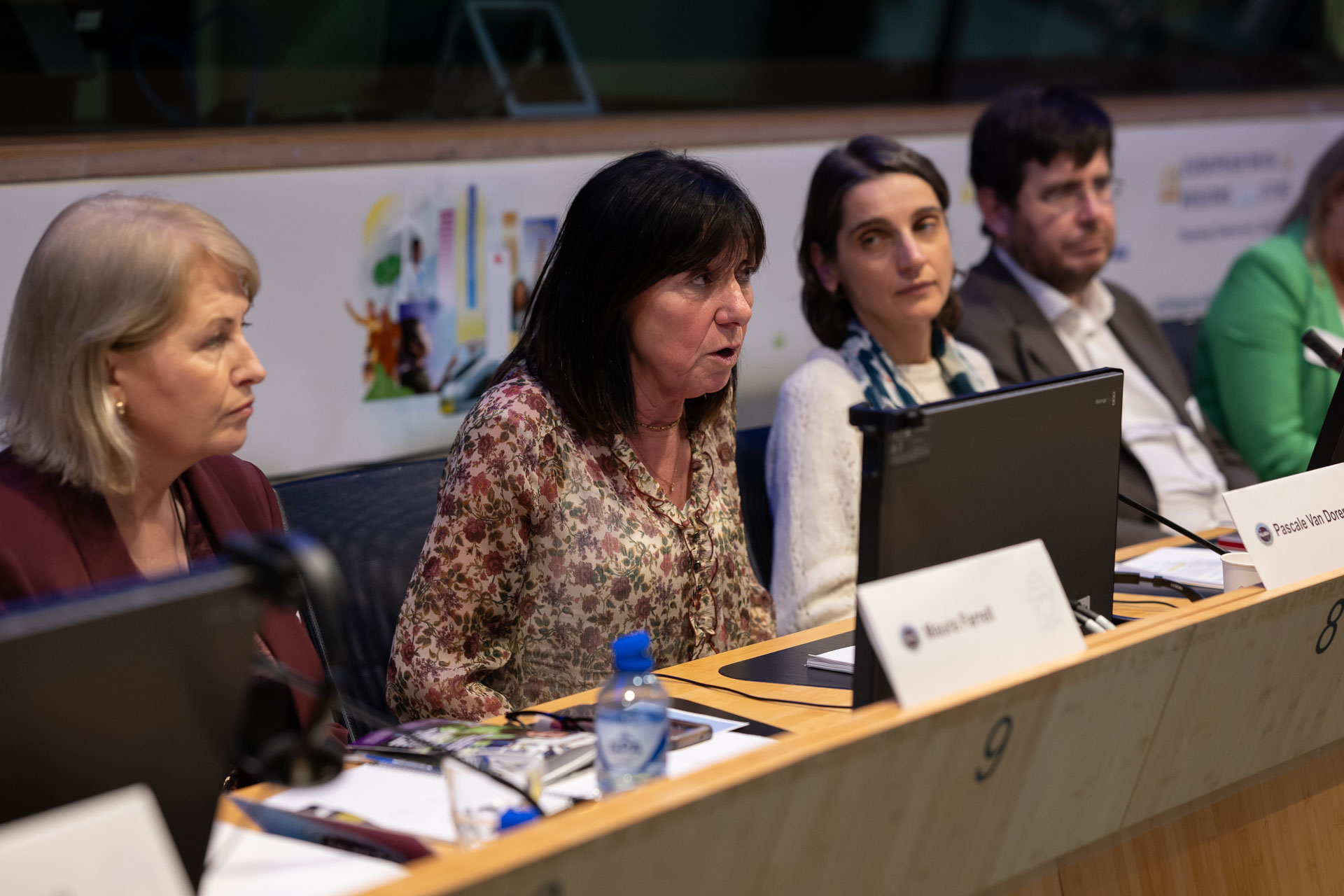
From an EU support perspective, Pascale Van Doren, Team Leader of the Rural Pact Support Office, underlined the role of the Rural Pact in amplifying women’s voices through collaboration, knowledge exchange and policy advocacy. She stressed that shared ownership — across EU, national and local levels — is essential to embed gender equality in future strategies. Van Doren also insisted on better data and monitoring, noting that without gender-sensitive evidence, policymaking risks reinforcing existing gaps rather than closing them.She reminded the audience that networks like the Rural Pact Community Group on Women in Rural Areas are now active platforms where women can influence EU agendas, but warned that political commitment and follow-through remain crucial.
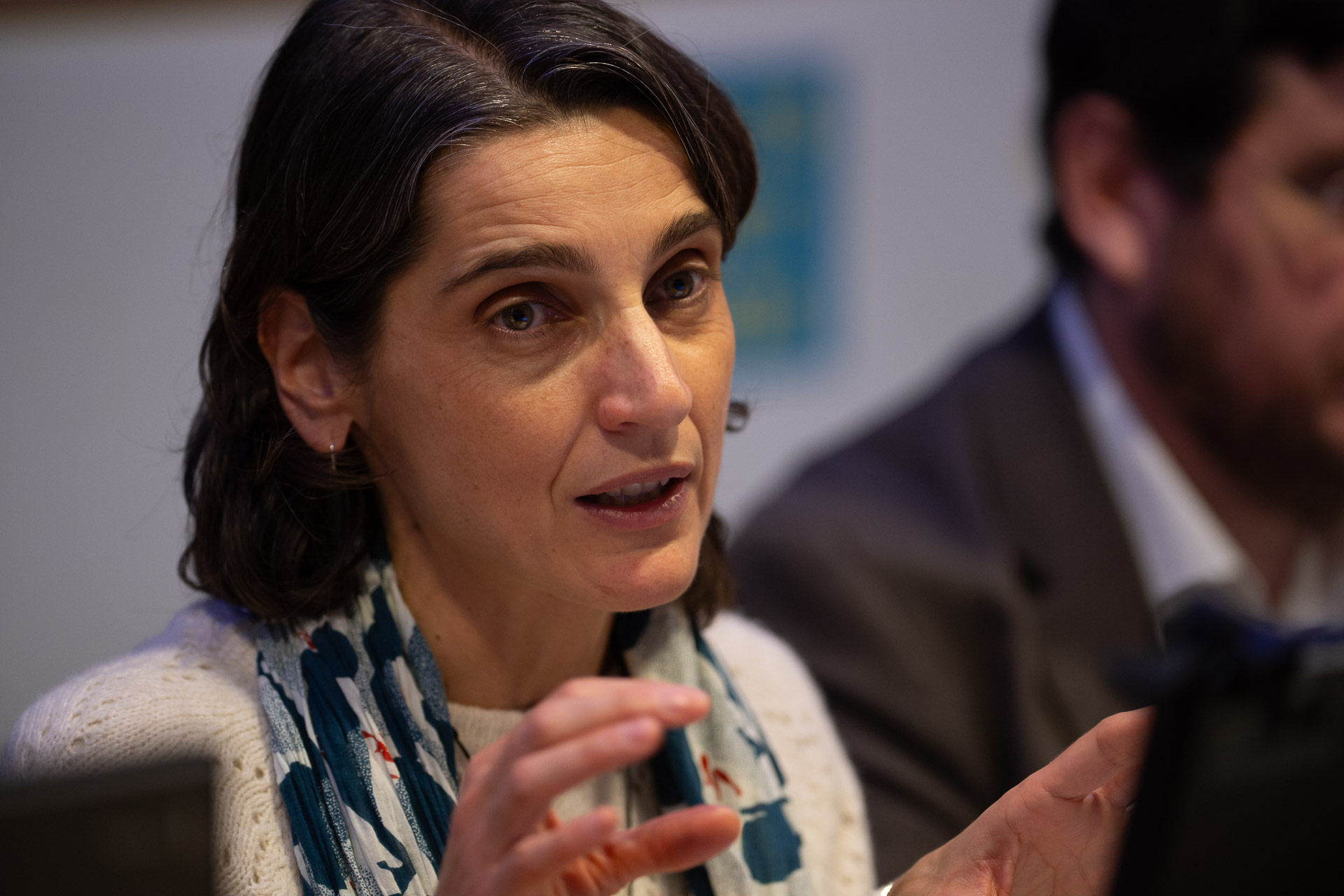
Turning to EU strategy, Alexia Rouby, Coordinator of Long-Term Vision for Rural Areas (LTVRA), connected the panel to the LTVRA and the EU Rural Action Plan. She acknowledged both the innovation potential of rural women and the structural barriers that push many to leave rural territories. Rouby noted that EU instruments already exist—from CAP to research, startup support, care-strategy measures and rural innovation policies—but called for stronger integration of gender and rural lenses so that policies “work together, not in parallel.” She welcomed FLIARA’s timing and stated that its evidence and foresight will feed into the upcoming update of the Rural Action Plan, including innovation-focused actions.
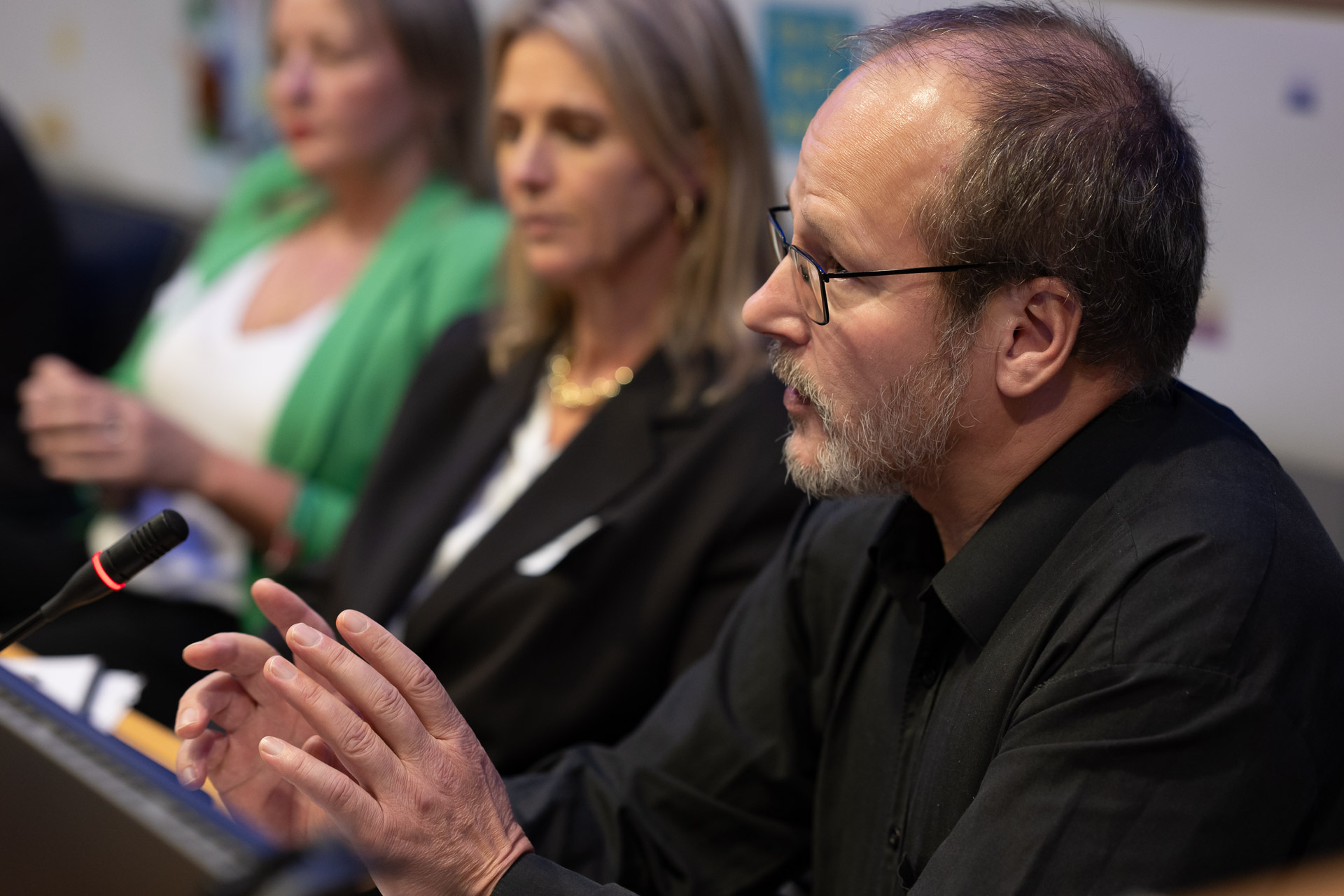
Bringing a research perspective, Hannu I. Heikkinen, Professor of Cultural Anthropology, University of Oulu, , reflected on patterns emerging from the project’s fieldwork. He noted that many women-led innovations are clustered in “social, care, wellbeing and community-driven sectors” — areas that current financial and subsidy systems often fail to recognise as innovation. As a result, women’s contributions remain undervalued, under-resourced and under-reported. Heikkinen urged policymakers to rethink how innovation is defined and supported, and argued that EU projects should systematically include “afterlife plans” to sustain networks like those created by FLIARA, instead of letting them dissolve once funding ends.
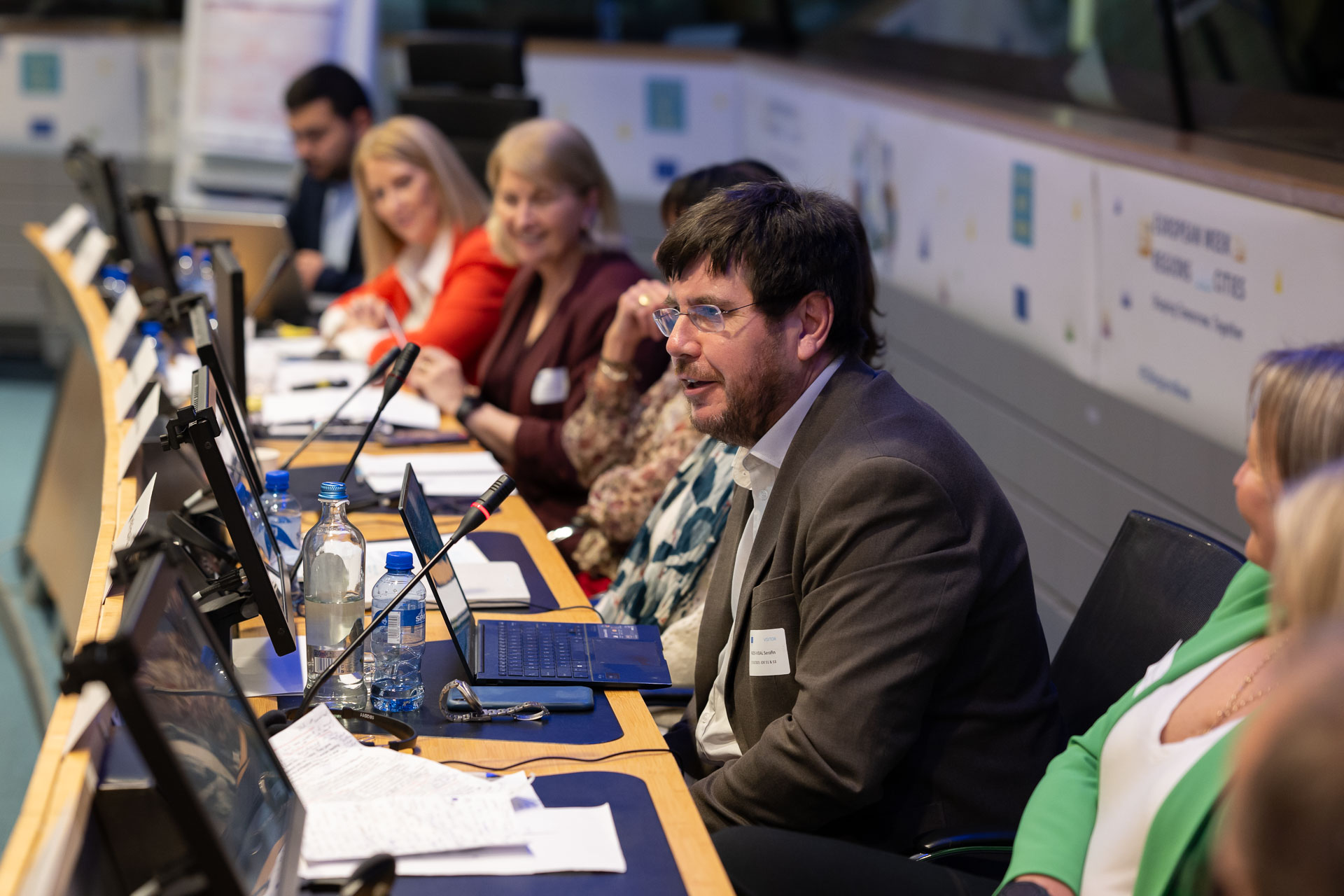
Finally, Serafín Pazos-Vidal, Rural Policy and Governance Expert at the European Association for Innovation in Local Development and representing the Grass Ceiling Project, brought the discussion back to governance. He highlighted rural proofing and multi-level governance as essential tools to ensure that gender equality and women-led innovation are embedded in the implementation of the Long-Term Vision. Policy, he stressed, must operate “from Brussels to local councils” and must be backed by indicators capable of tracking gender outcomes, otherwise “we will continue to fund intentions instead of results.” He also encouraged the FLIARA community to remain engaged beyond the project, noting that the months ahead — with CAP reform talks and a revision of key EU frameworks — are a window of opportunity.
Together, the panellists converged on a single conclusion: The knowledge, talent and innovation of women in rural areas is not a niche — it is a structural necessity for Europe’s future. To unlock it, policy must embrace visibility, resources, networks, care infrastructure, fair funding models and gender-sensitive governance.
This panel set the tone for the conference’s final message: FLIARA has shown the way — now implementation must follow.
From Shared Reflections to a Shared Responsibility
The conference concluded with a synthesis of the workshop outcomes and a forward-looking message on FLIARA’s legacy. Assistant Professor Gerdy Verschuure-Stuip and Professor Willem Korthals Altes opened the final session by presenting the collective insights gathered across fourteen workshop tables. Despite the diversity of perspectives in the room, the results were strikingly coherent. Participants stressed that supporting women in rural innovation requires system thinking, not silo thinking—connecting farming, care, sustainability, entrepreneurship, education, and community life as interdependent components of rural development rather than isolated policy streams.
Across groups, several recurring needs emerged. First, participants highlighted work–life balance and care infrastructure as foundational enablers of women’s participation. Without accessible childcare and fair distribution of care duties, innovation potential is constrained long before a business plan is written. Second, many tables pointed to the shortcomings of rigid administrative systems, which too often fail to reflect the realities of women-led initiatives. From the limitations of LEADER eligibility to bureaucratic fragmentation across departments, participants called for more agile, place-sensitive funding and advisory systems. A third shared message concerned capacity, confidence and representation: role models matter—and not only “iconic” ambassadors, but also everyday role models at different stages of their journey (junior, emerging, senior). Participants also urged stronger awareness among advisors and mentors, along with better gender-disaggregated data to track progress. Finally, and powerfully, every group raised the issue of continuity: networks such as the one built by FLIARA are too valuable to dissolve at the end of a grant. Ensuring after-life strategies must become a condition—not an afterthought—of future rural and innovation programmes.
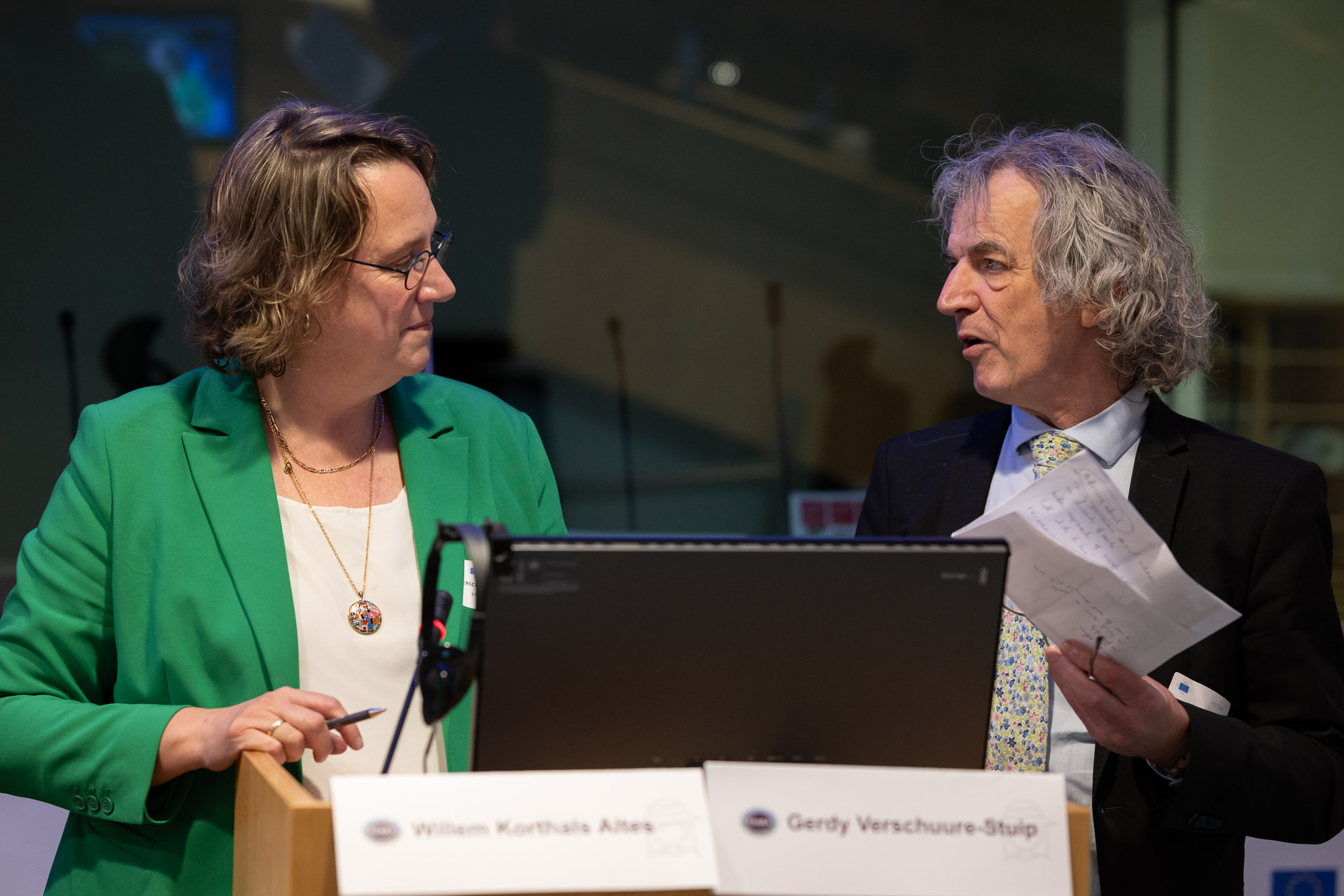
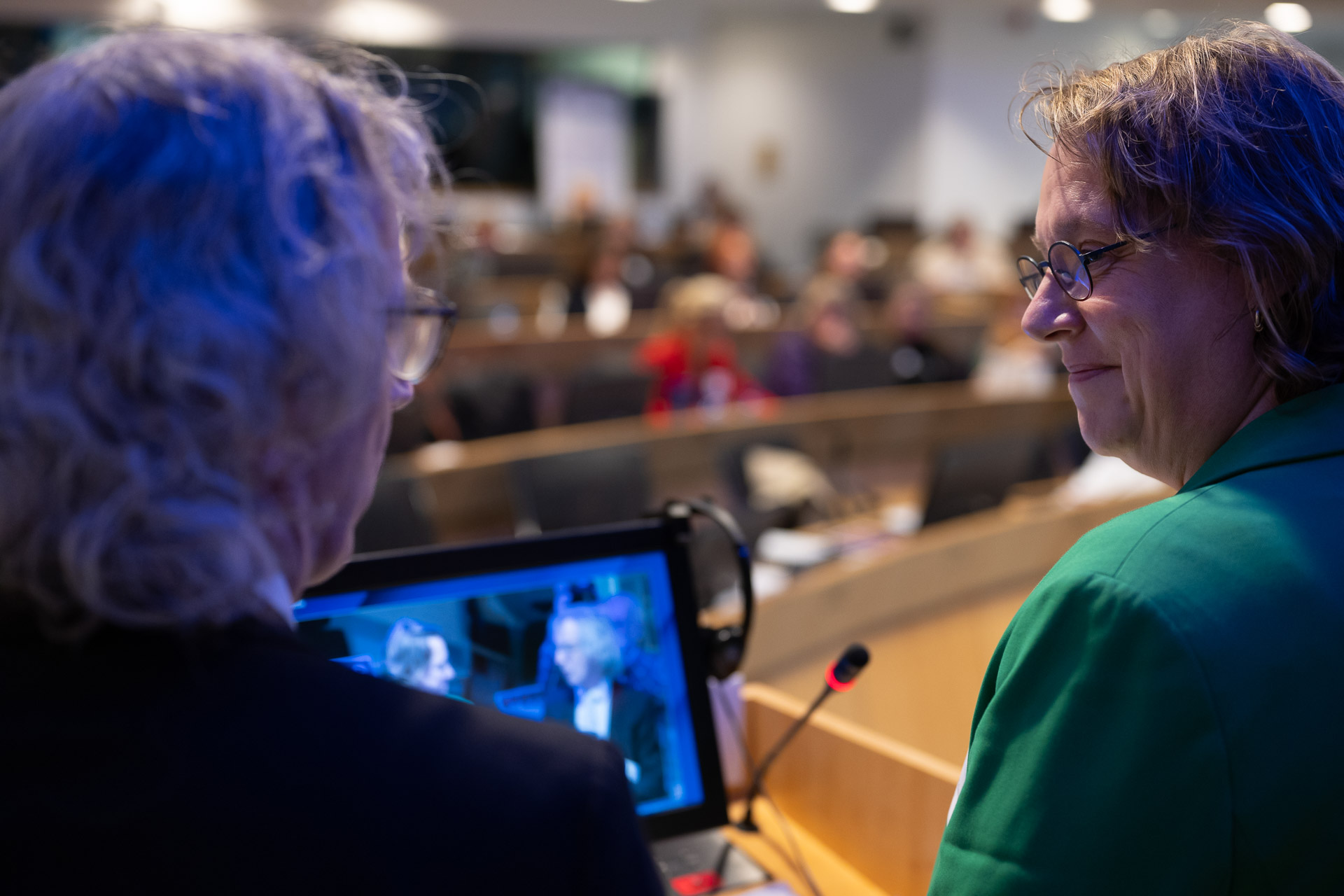
The room responded warmly to the workshop summary: the knowledge is clear, the momentum is real, and the responsibility to act now sits with institutions, funders, regions and communities alike.
From Results to Responsibility
To close the event, FLIARA Project Coordinator Dr Maura Farrell delivered a reflective and compelling final address. She began by thanking the speakers, partners, ambassadors, sister projects, political hosts, and the European institutions that believed in the project. Her gratitude extended to the consortium and especially the women whose stories shaped every insight: “They were not participants. They were partners.”
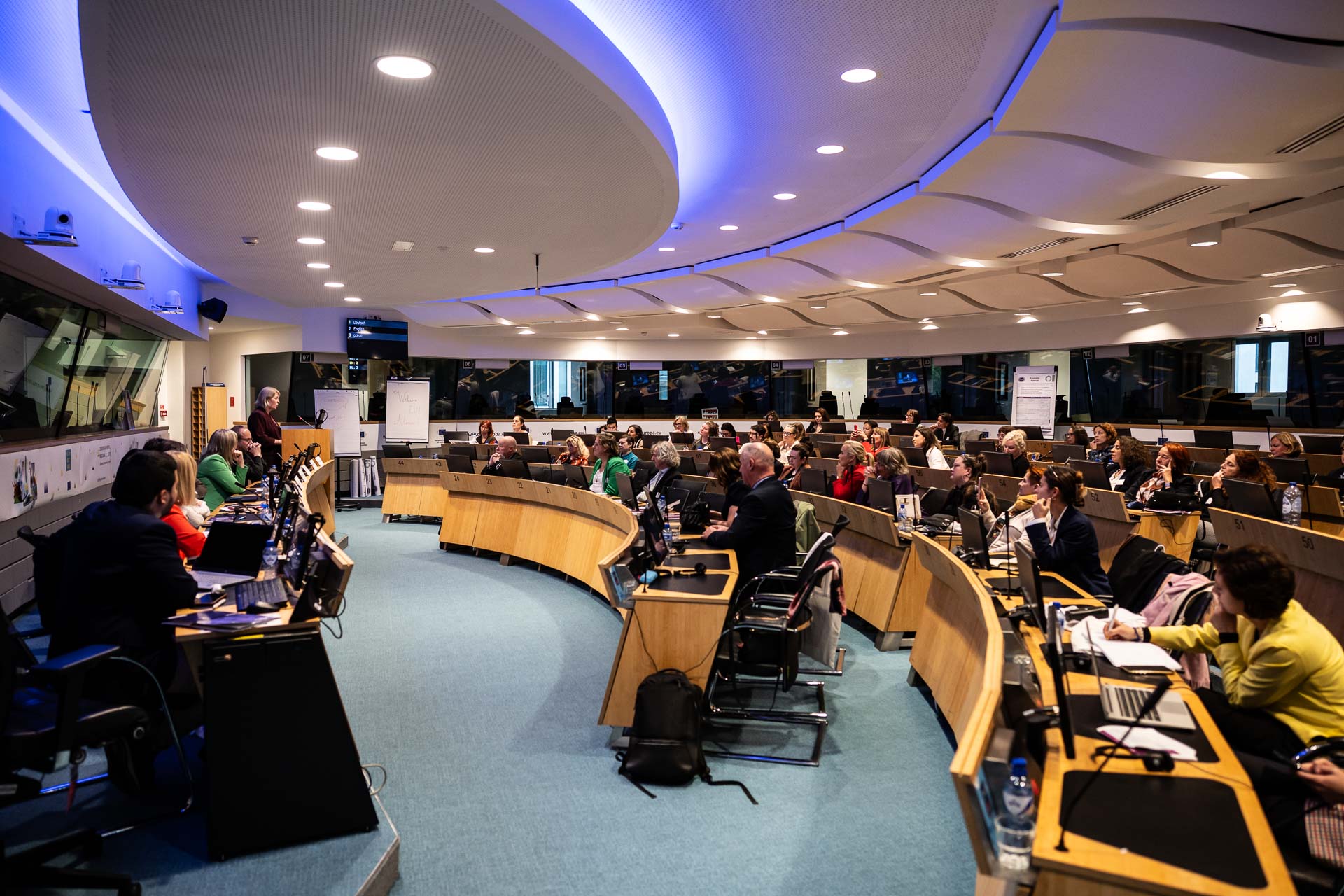
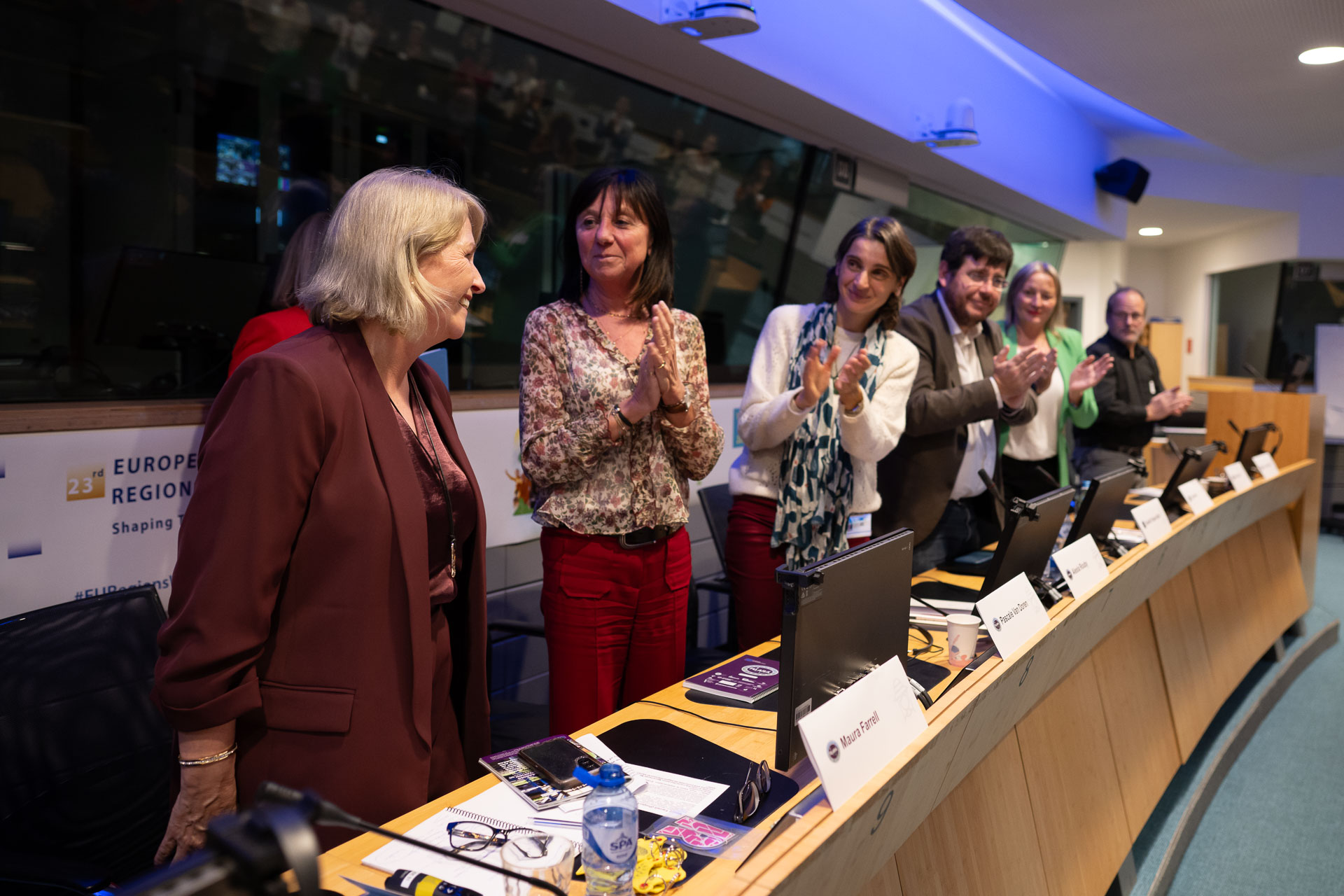
Dr Farrell reminded the room that gender equality in rural areas is not merely a project goal but a European legal and democratic commitment. Yet FLIARA’s evidence shows a persistent gap between principle and practice. Across Europe, women are driving sustainability, diversifying economies, and strengthening communities—but without equal access to land, finance, recognition, decision-making power, or care supports, their contributions remain undervalued and under-resourced.
She called on policymakers to take FLIARA’s evidence forward by embedding gender equality in rural proofing, CAP implementation, and post-2025 strategies. Women, she argued, should not merely be visible in rural policy but central to its design. Reflecting on the ambassadors and case study women, she stressed their proven impact even with limited support, adding: “Imagine what these women could achieve if they were fully supported through gender-responsive rural development, access to land and finance, and a more inclusive Common Agricultural Policy.”
Ending on a symbolic note, she echoed the words of former Irish President Mary Robinson: “Women of Ireland, instead of rocking the cradle, you have rocked the system.” Dr Farrell affirmed that the women connected through FLIARA are doing exactly that across Europe—and that their work will not end with the project.
A Network That Will Continue to Grow
The event closed with an invitation for a final group photograph—an image that captured the spirit of the day: ambassadors, researchers, policymakers, practitioners and supporters standing together as a community, not a collection of sectors. The conference ended slightly over time, not because of delay, but because there was more to say, more to share, and more still to do.
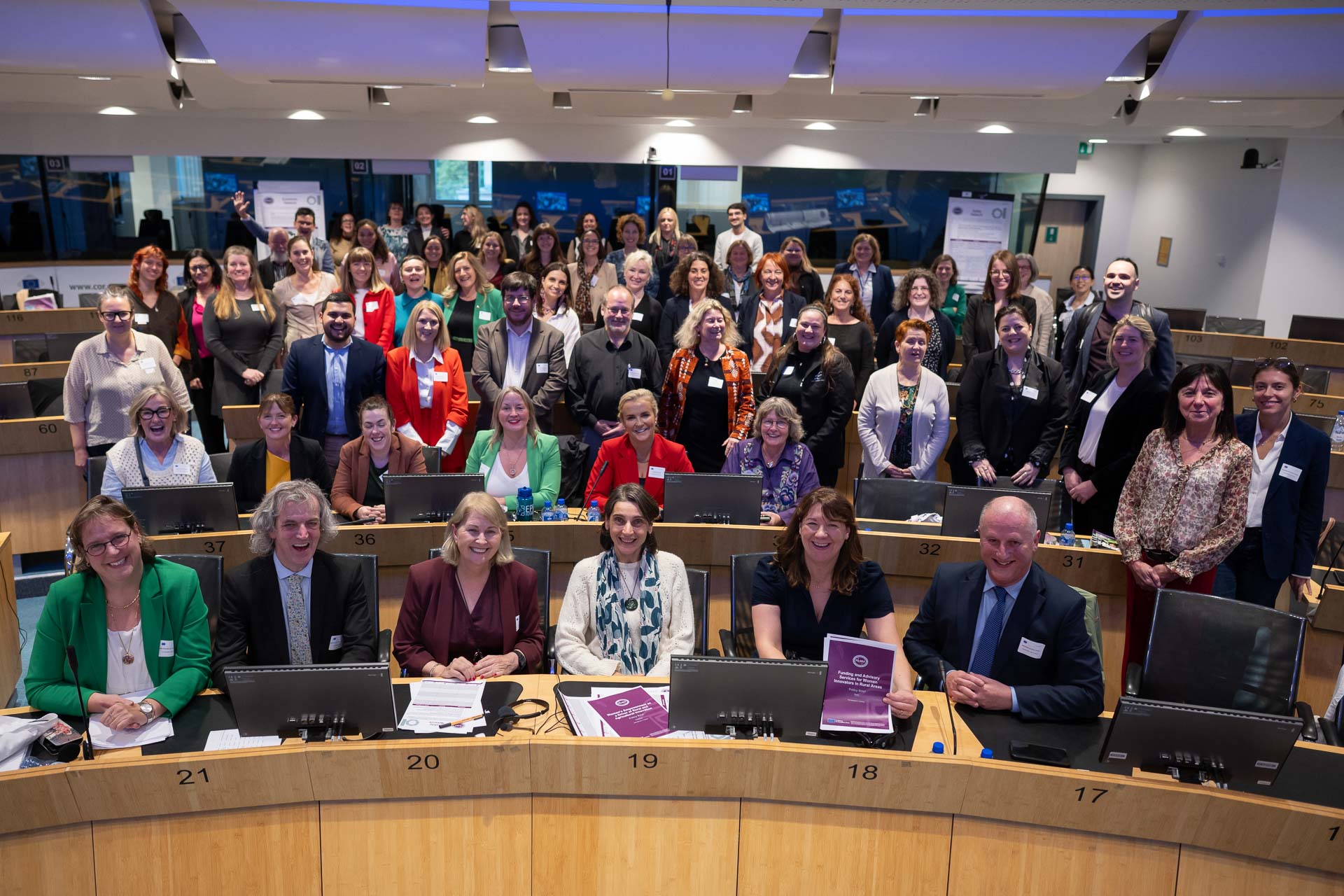
In Brussels, the FLIARA conference did more than present results—it passed a relay baton. The next steps now move beyond this project: to maintain the networks, inspire future ambassadors, shape policy, and embed gender-responsive innovation in Europe’s rural future. As the room dispersed, one message was unmistakable:
The legacy of FLIARA is not a document—it is a community. And that community is just getting started.
Missed the event? Watch the full conference below:
Photos: Simon Blackley – The FLIARA Project
